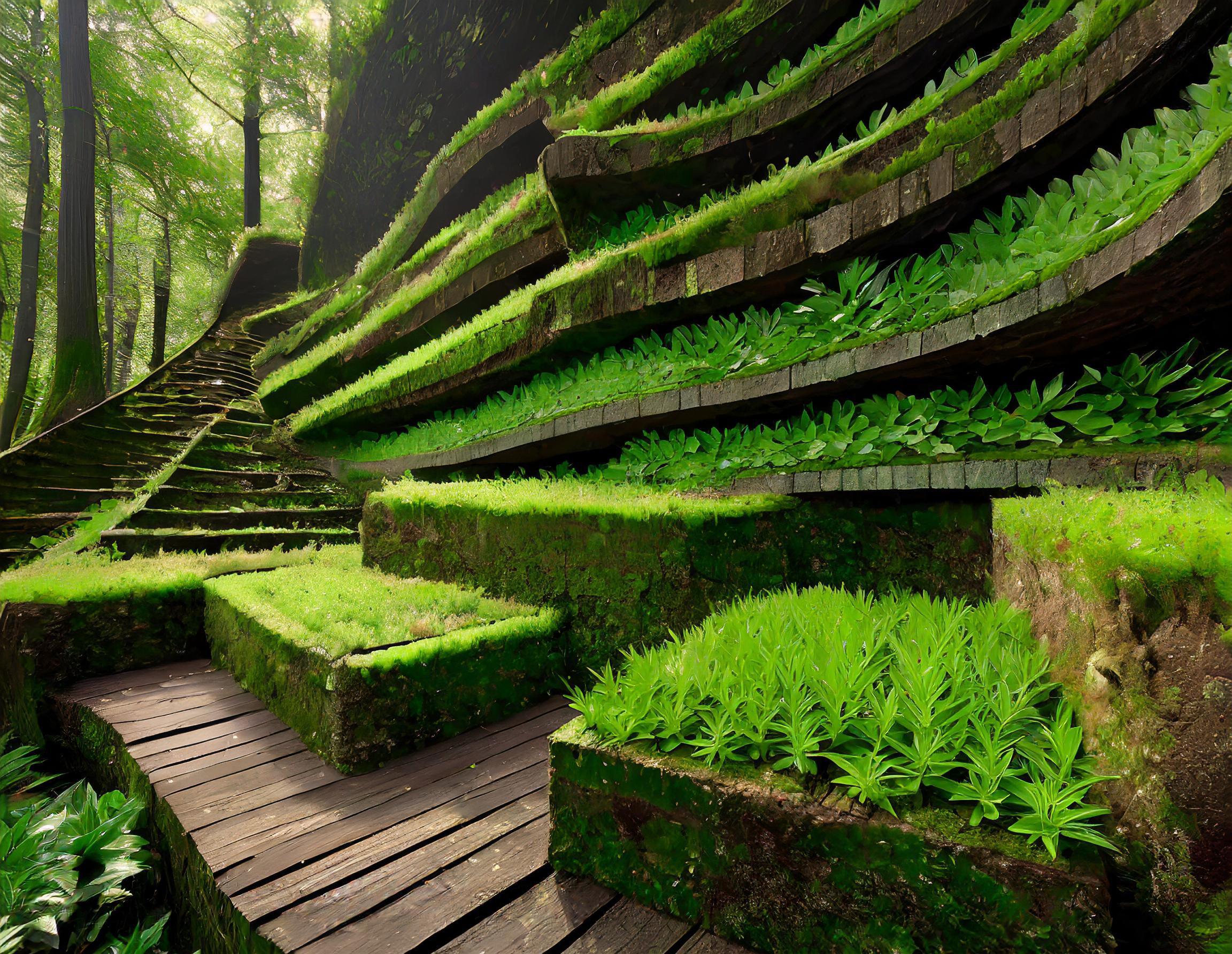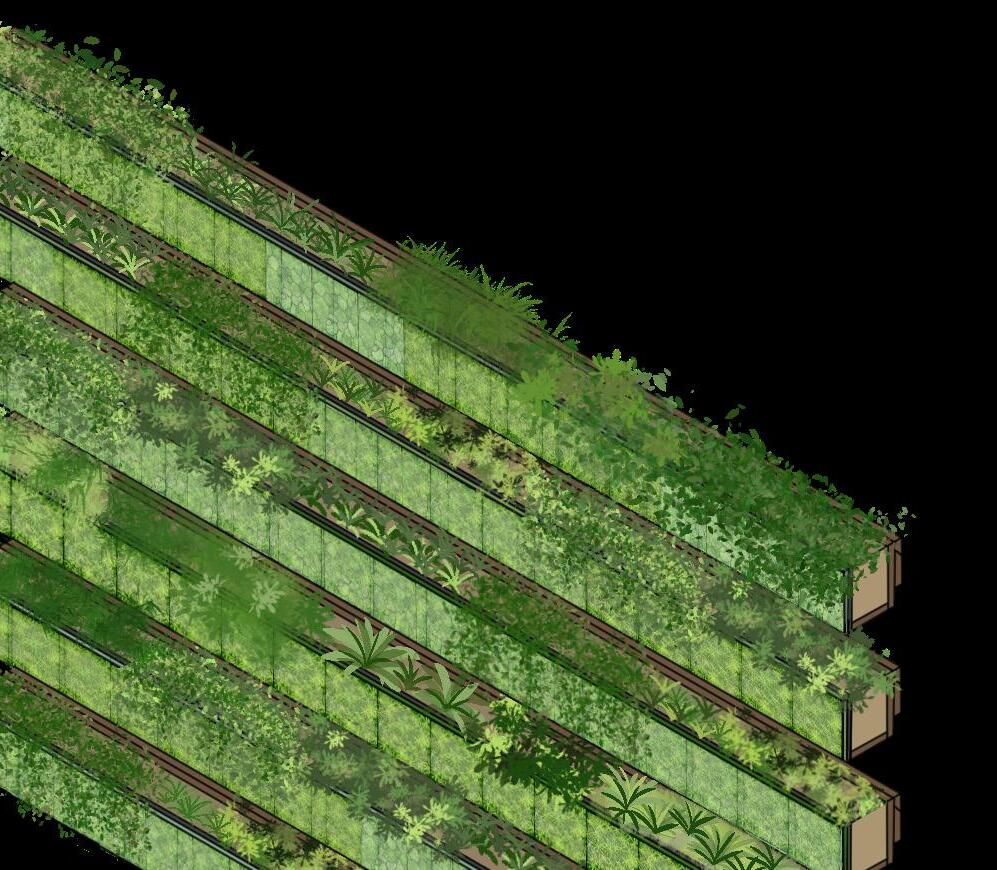

MOSS MINGLE SPECIES
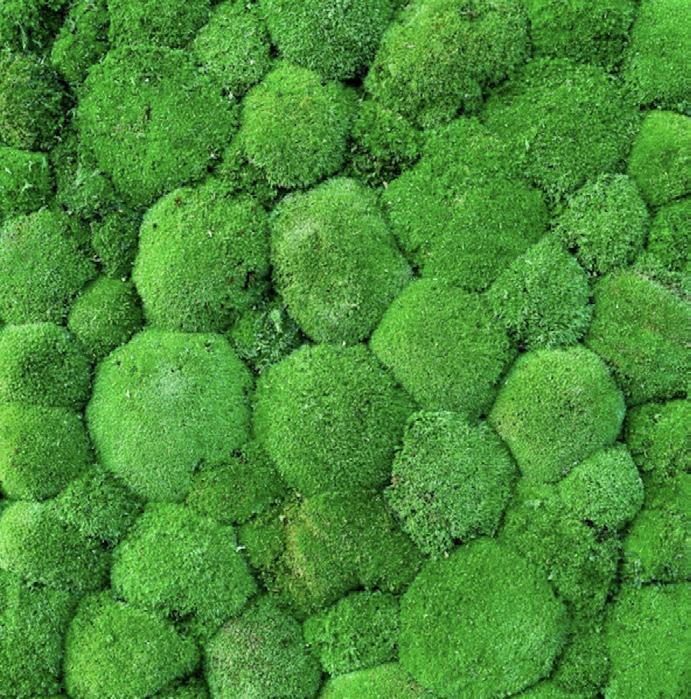
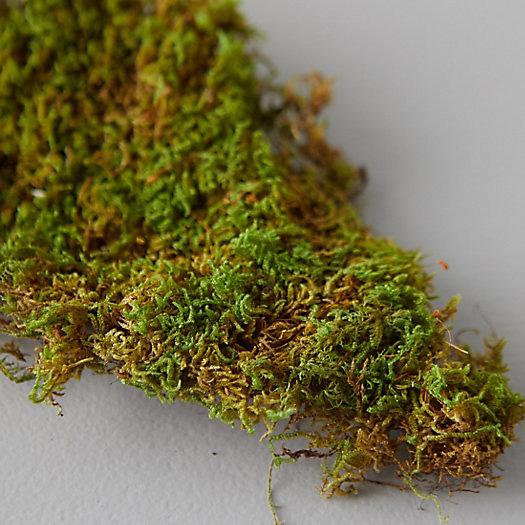
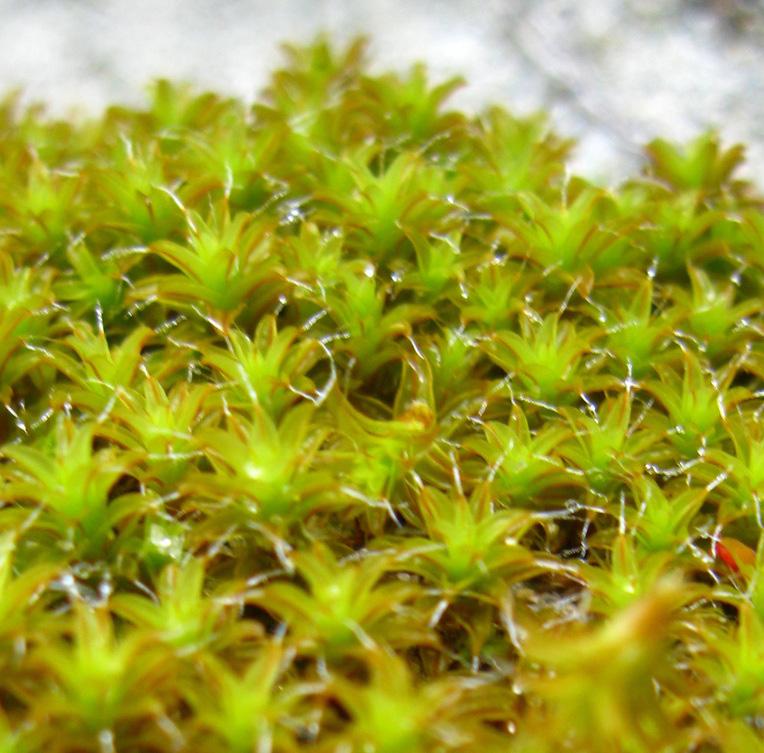
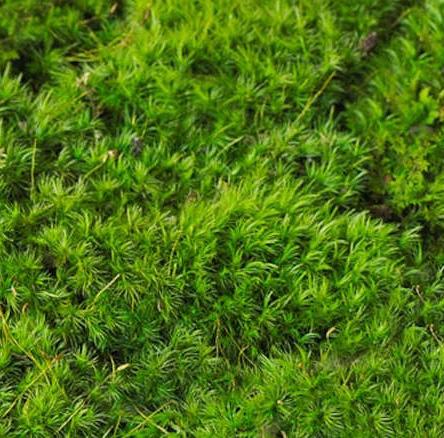
GENERAL RESEARCH
Moss is a seedless plant that uses spores to reproduce instead of seeds. It is a non-vascular plant and does not have roots. No soil is necessary for moss to grow and it can be grown on a variety of surfaces. There are over 700 species
of moss in Oregon alone. The images above show a few examples of all the different forms moss can take. Some of the benefits of using moss indoors or in a garden are: air purification, noise control, it is not susceptible to pests or diseases,
fast growth, and its adaptability. Moss is used in a variety of applications that will be discussed later in this project.
3-
4-“Mood
(PIN)CUSHION SHEET STAR/TWISTED MOOD
MOSS
1- “36×54 Cushion moss artwork.”
2- “Preserved Sheet Moss.”
Dan
Moss – Dicranum Scoparium.”
Lichen is the result of a symbiotic relationship between fungi and algae. Fungus is the dominant partner and gives lichen its shape.
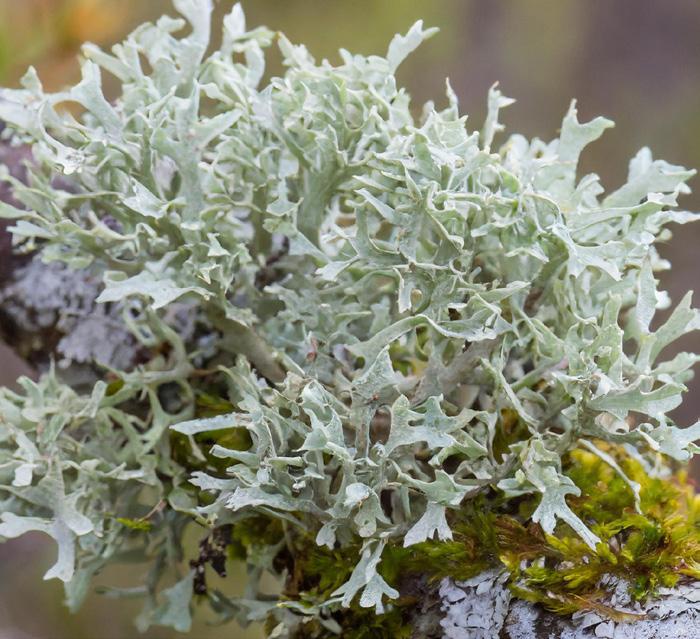
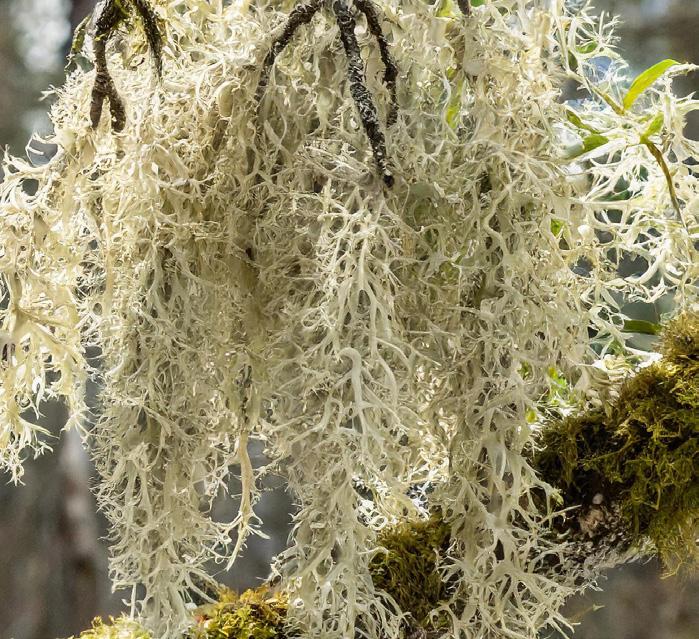
GENERAL RESEARCH
AND LICHEN
Growing Moss:
• 2 cups water
• 2 cups buttermilk
• Top with moss
• Blend
• Paint onto desired surface
• Keep moist
• Wait 3 weeks
Water Needs:
• No irrigation system needed
• Humidity: minimum 70%
• Care: Mist with filtered water
Light Preferences:
• Medium-low light
• Some mosses are sun tolerant
• Some species have developed to grow in the desert
REINDEER LICHEN
MOSS
BEARD LICHEN
1- Adobe Firefly, E. Willis
2- Adobe Firefly, E. Willis
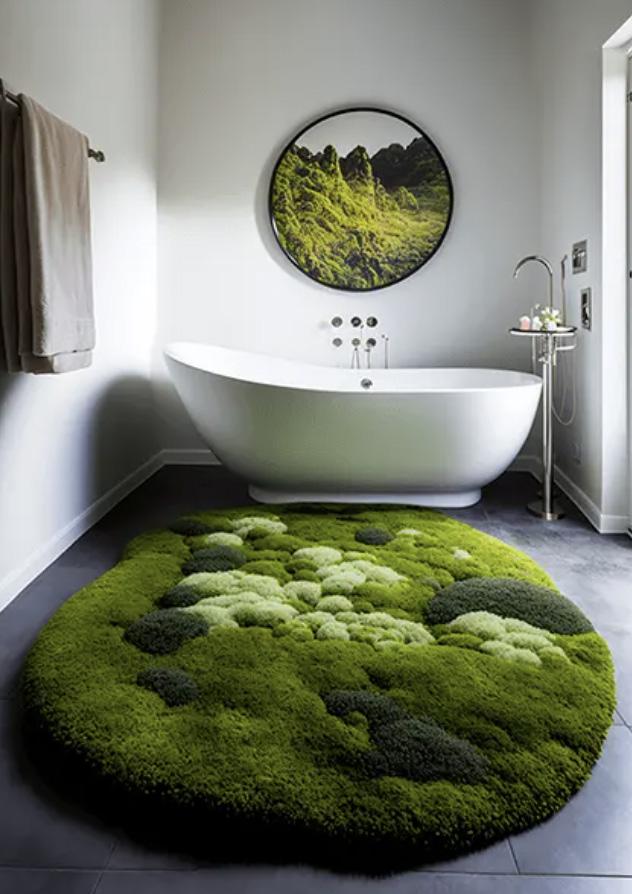
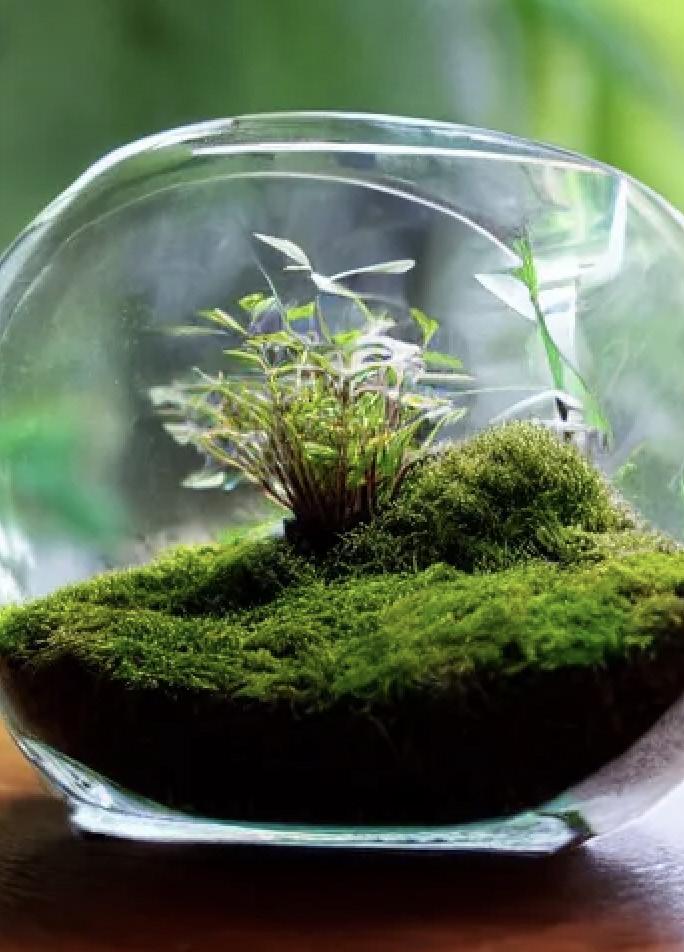
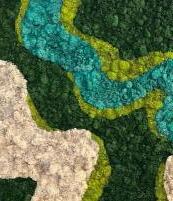
Mat
• Humidity: 70-80%
• Silicone Backing
• Coconut Fiber Liner
• Live Moss
• Variety of growth medium: soil, rock, or wood surface
• Keeps moss damp
• Low light
• Some airflow
Wall
• Preserved wall
• Living wall
Bath
Terrarium
1- Photo: Bath Mat (Dagmaramach)
2- Photo: Terrarium (AI-stable diffusion)
Moss
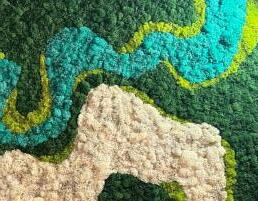
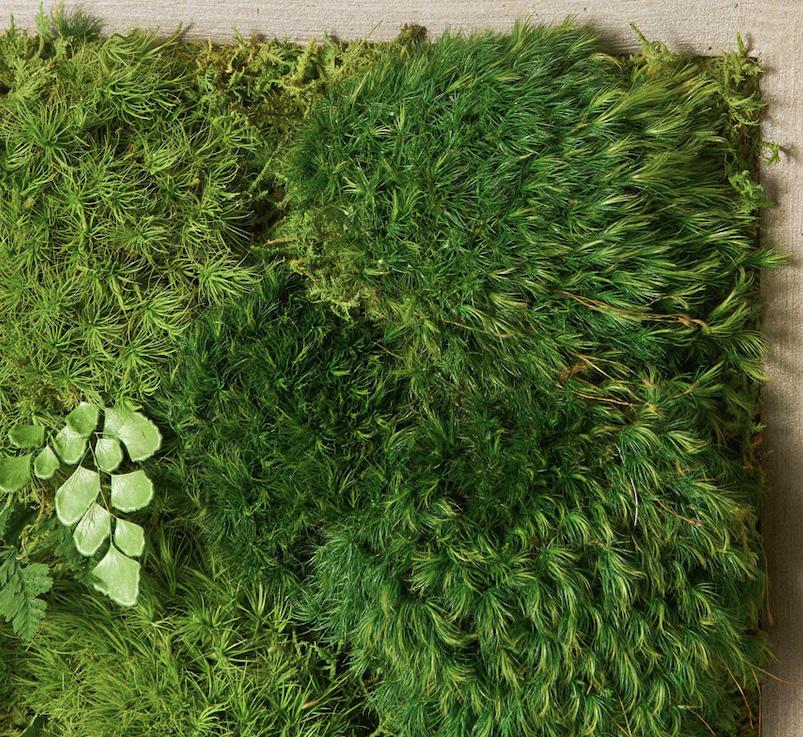
Preserved Moss Wall Requirements
• Humidity: 40-50%
• Away from direct light
• Far from heating and cooling systems
• 7-10 year lifespan with little to no maintenance
Preservation Process
• Dry moss for 5 days
• Soak moss in
• 1 part glycerin : 2 parts hot water for 10 minutes
• Squeeze out excess liquid
• Dry again for at least 24 hours
1- Photo: “Blue Moss Art.”
2-Photo: “Small Preserved Living Wall 14” x 14”.”
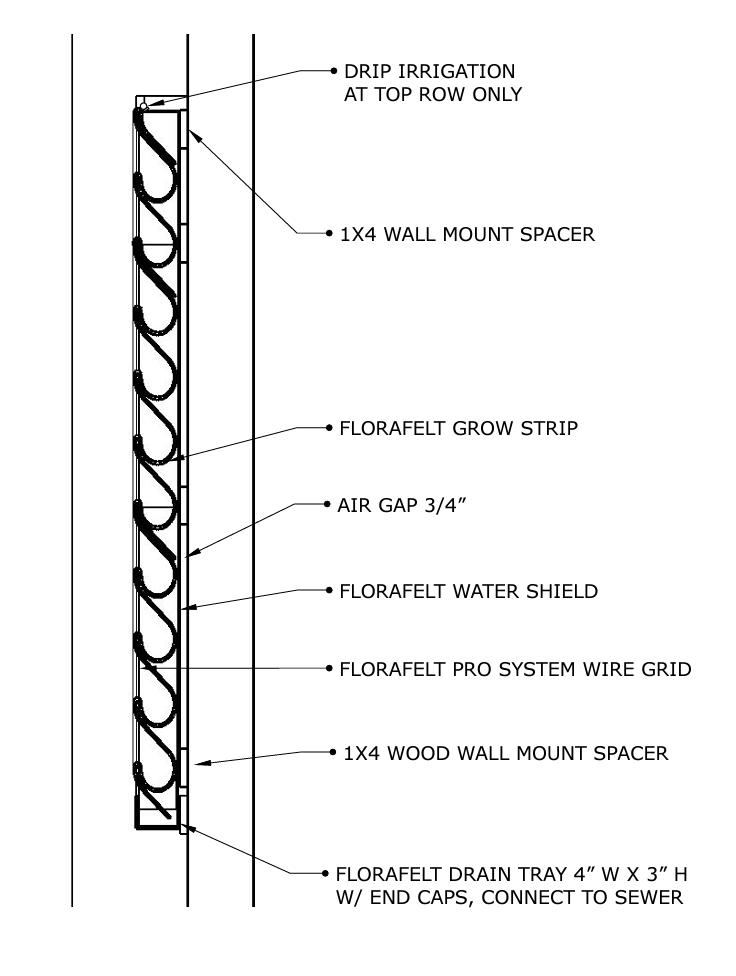
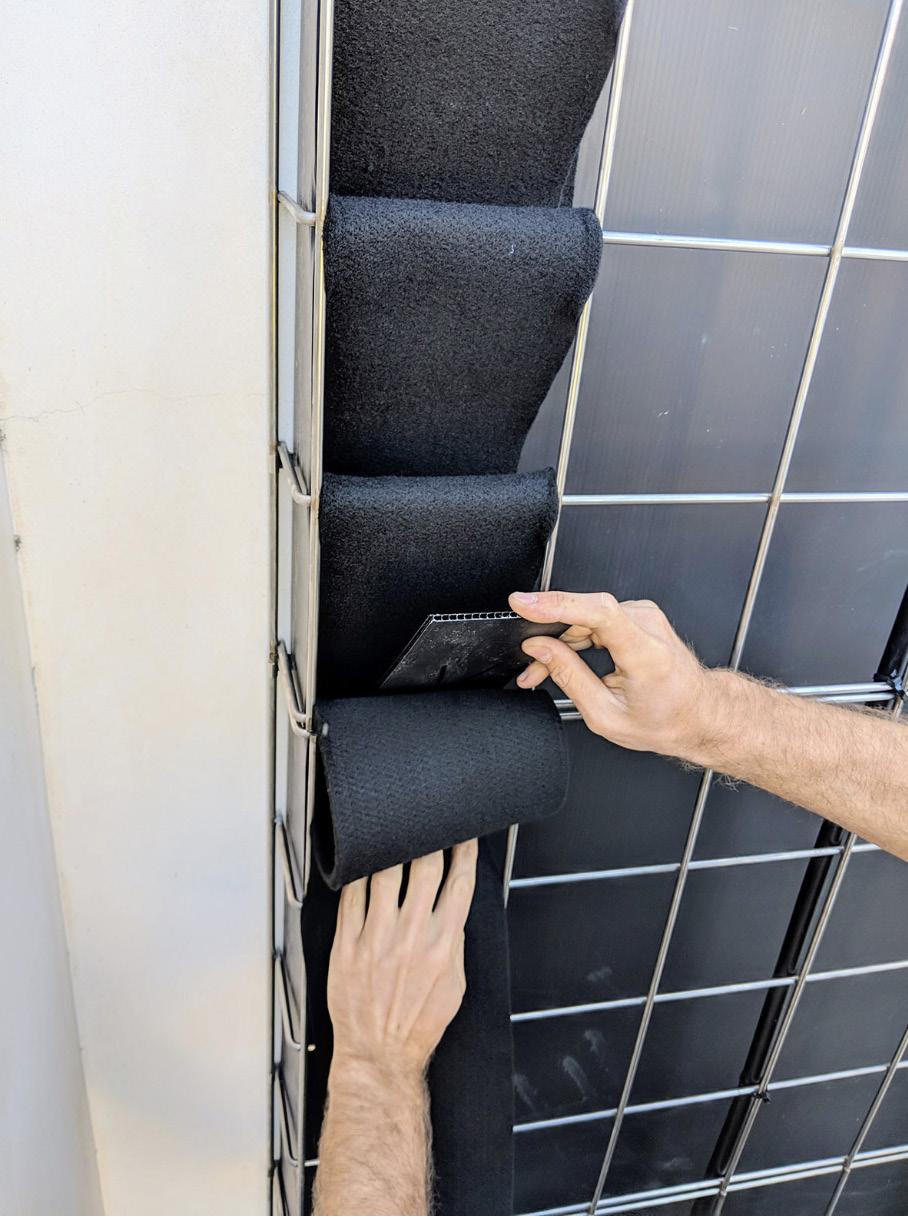
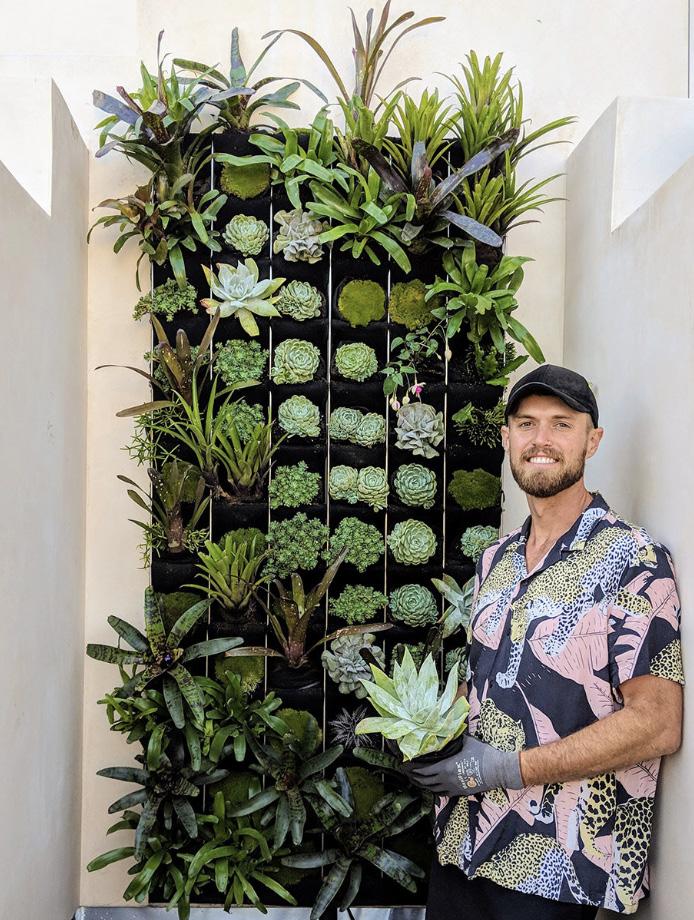
This system is a modular tile system which uses a wire grid to support the felt medium in which the plants can grow. It is easy to install as it comes with a water barrier and a simple drip irrigation system. This is a beneficial system because each plant can be swapped out if it is contaminated or not thriving. The growing medium FloraFelt is made from recycled PET plastic.
FloraFelt Living Wall Systems
FLORAFELT PRO SYSTEM
1- Photo: Construction Drawing
2-Photo: Installation Process
3-Photo: Root Wrap (“Florafelt Pro System Unit.”)
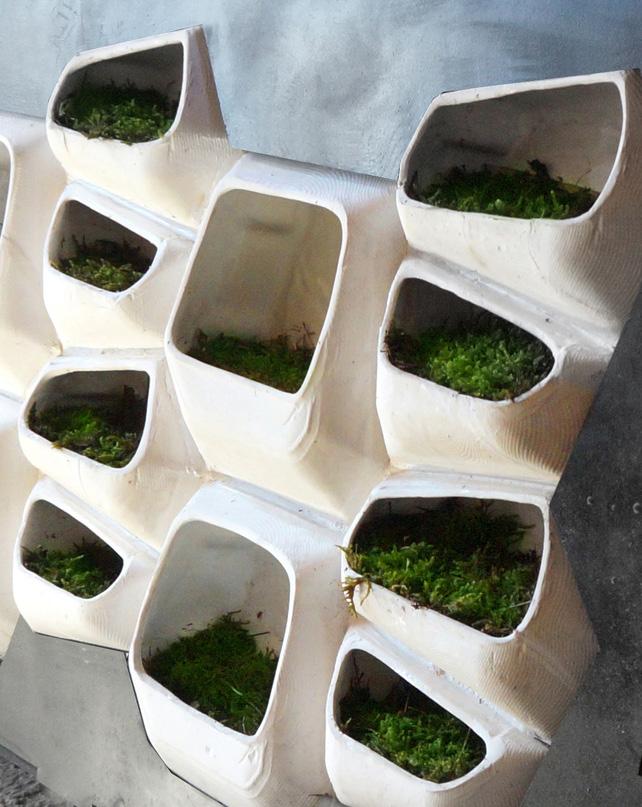
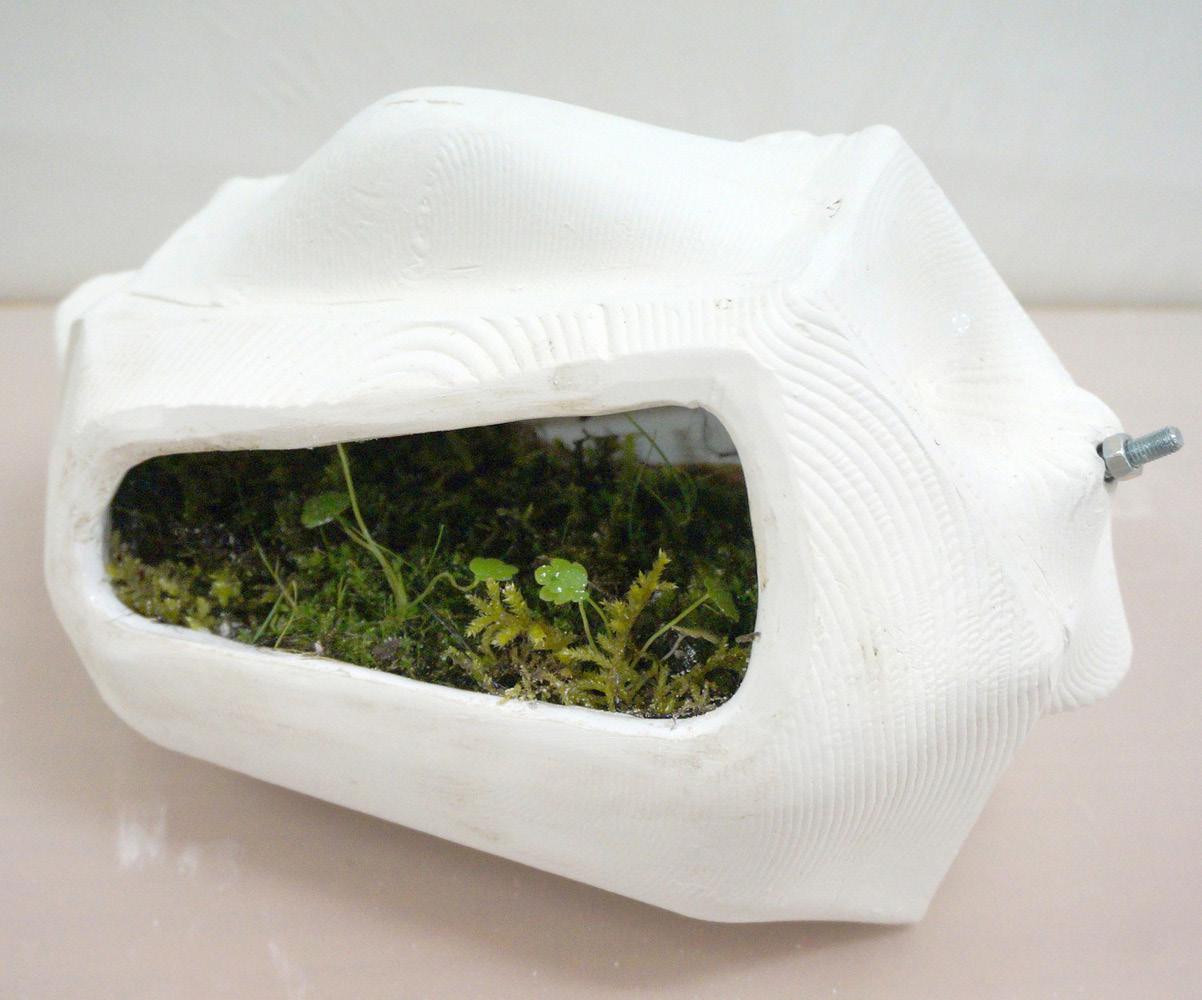
This green wall system was designed to cover a facade. The molded clay bricks are filled moss, which is grown on a compound of carbon fiber and hydrogels. The energy created from the moss is transformed into energy by collecting electrons. The bricks are connected by metal screws to form a panel which allows the electricity
to move through and be captured. The researches concluded that a group of 16 bricks can produce 3 volts.
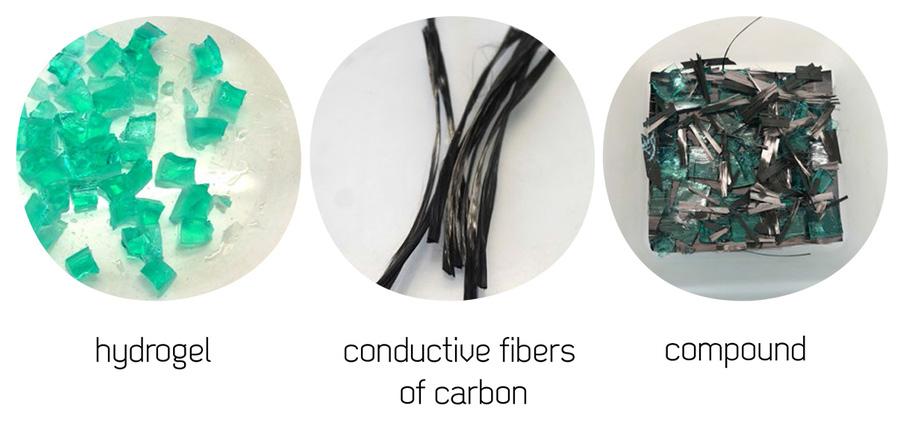
1- Photo: Living Wall System (Stott)
2-Photo: Individual Brick (Stott)
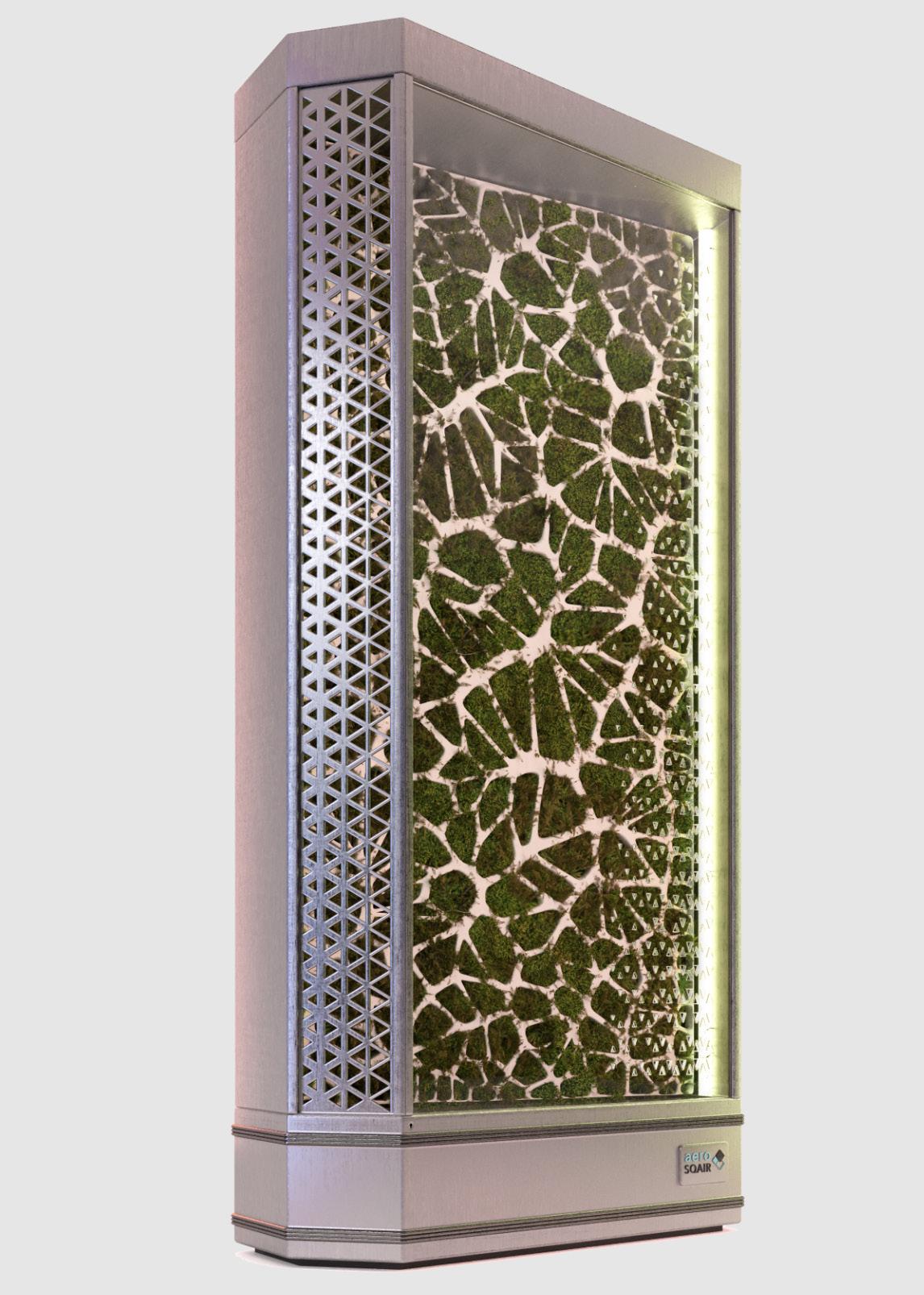
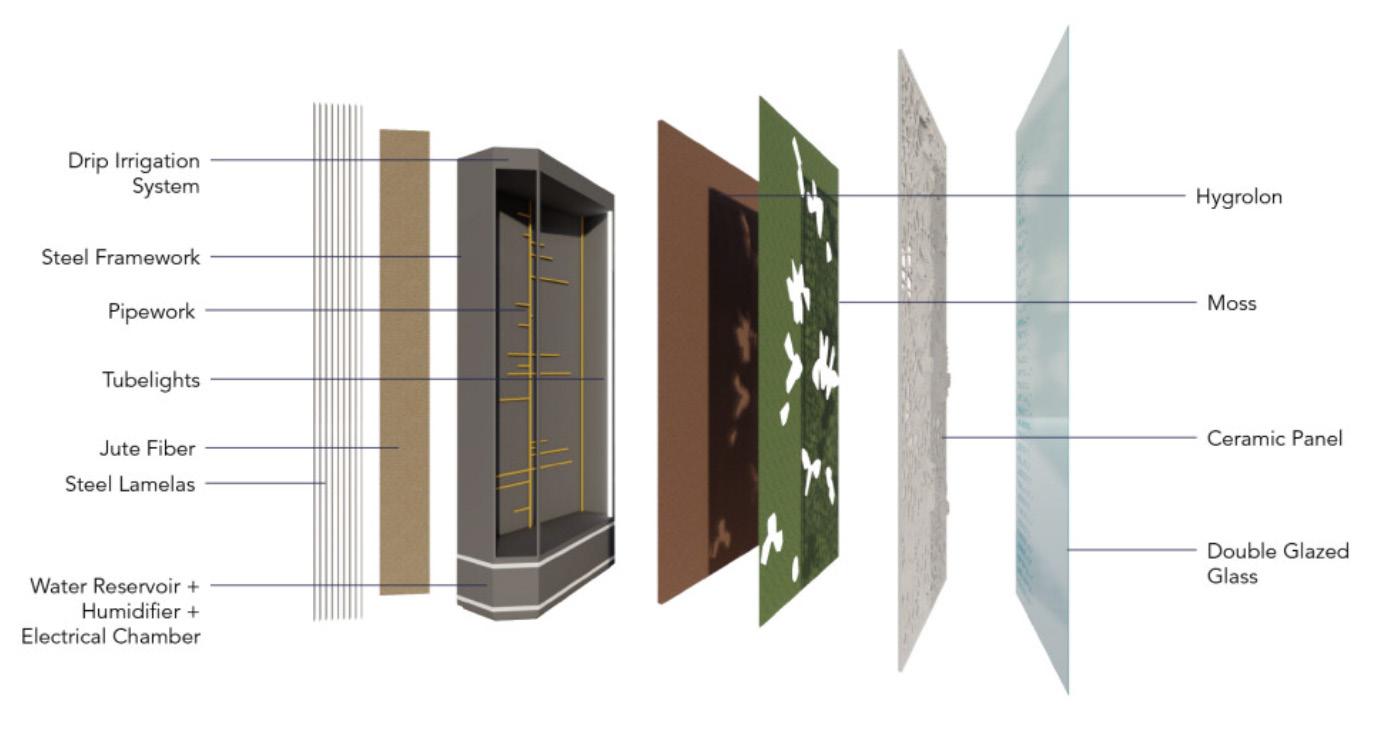
design with an uneven surface to help the moss grow like it would in its natural environment. These modules can be made in a variety of different sizes and placed on the floor, or wall of underground subways. They are beneficial to the air quality and also improve aesthetics in an otherwise often bleak space. PURIFICATION
AeroSqair is a system meant to purify air in subway systems. It is enclosed but has gaps for airflow and a filtration system. The modular system is self-contained and comprises multiple layers of air purifiers. It has a glass cover and drip irrigation which keeps the moss moist and healthy. The ceramic panel is formed into a parametric

1- Photo: Module Render
2-Photo: System Axon
3-Photo: Underground Render (“aeroSQAIR.”)
DESIGN PROPOSAL
After completing my research I will develop a proposed system for an indoor green wall that combines preserved moss and living plants. The image here shows an initial sketch of how this could come together.
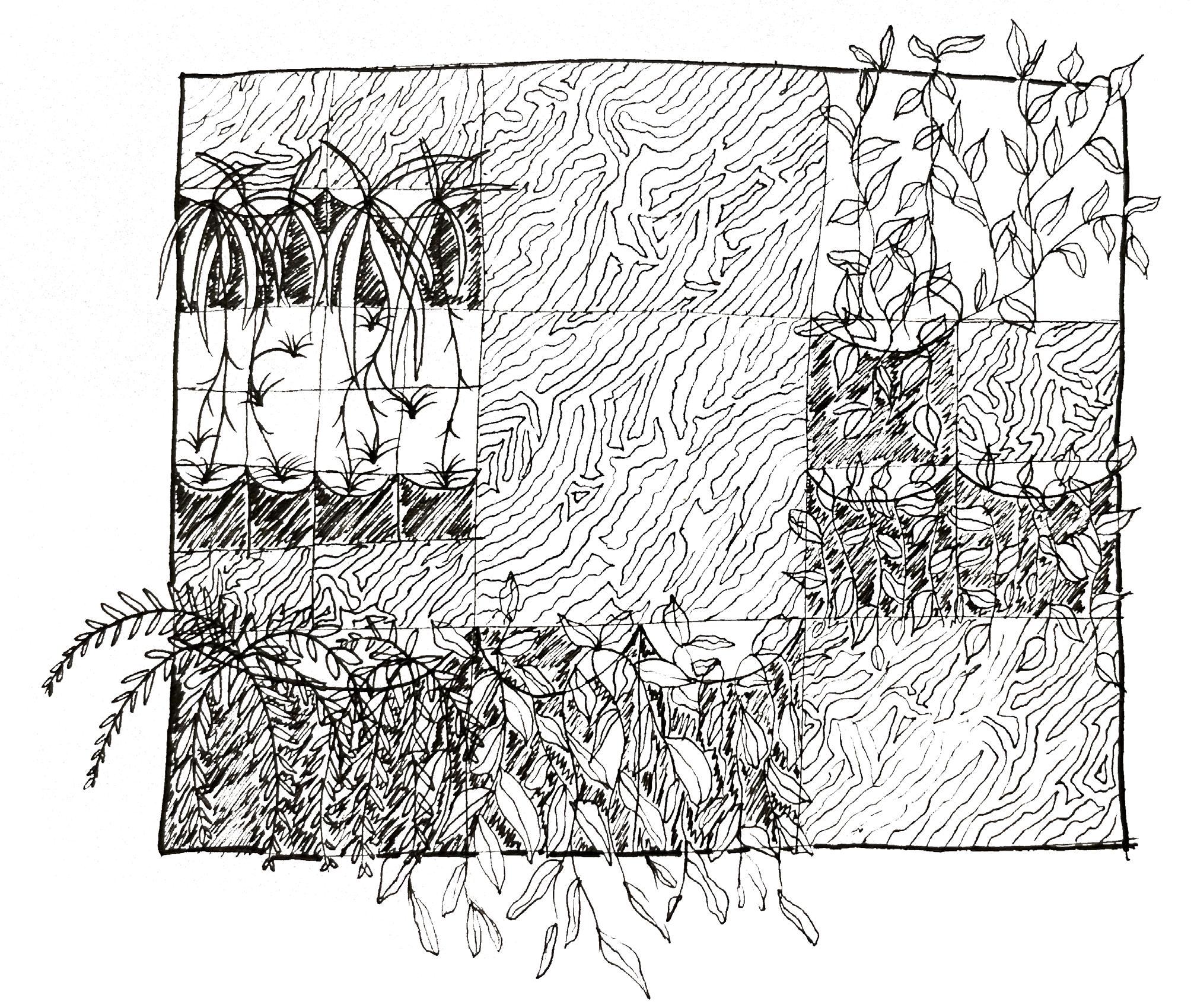
CONCEPT SKETCH
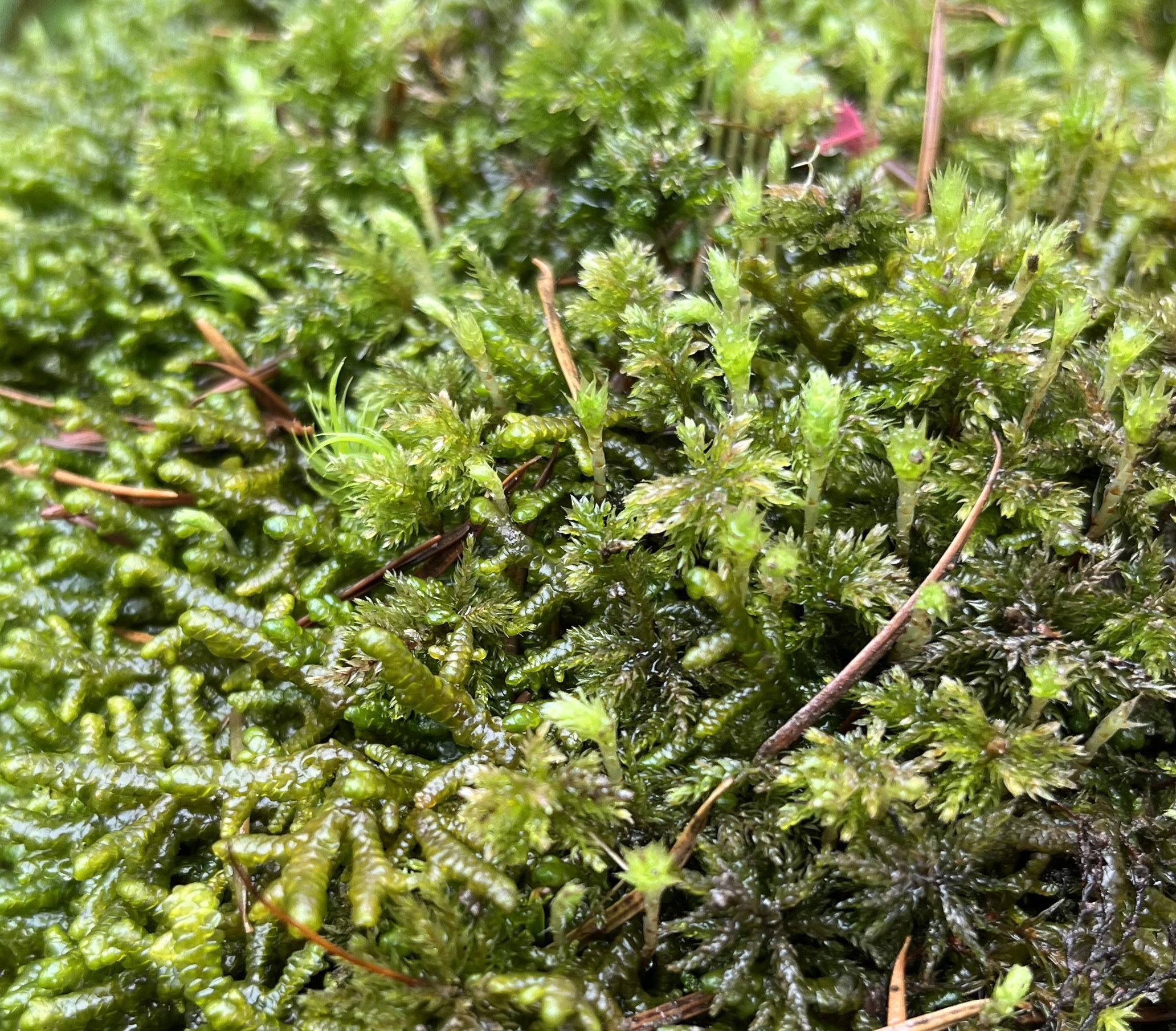
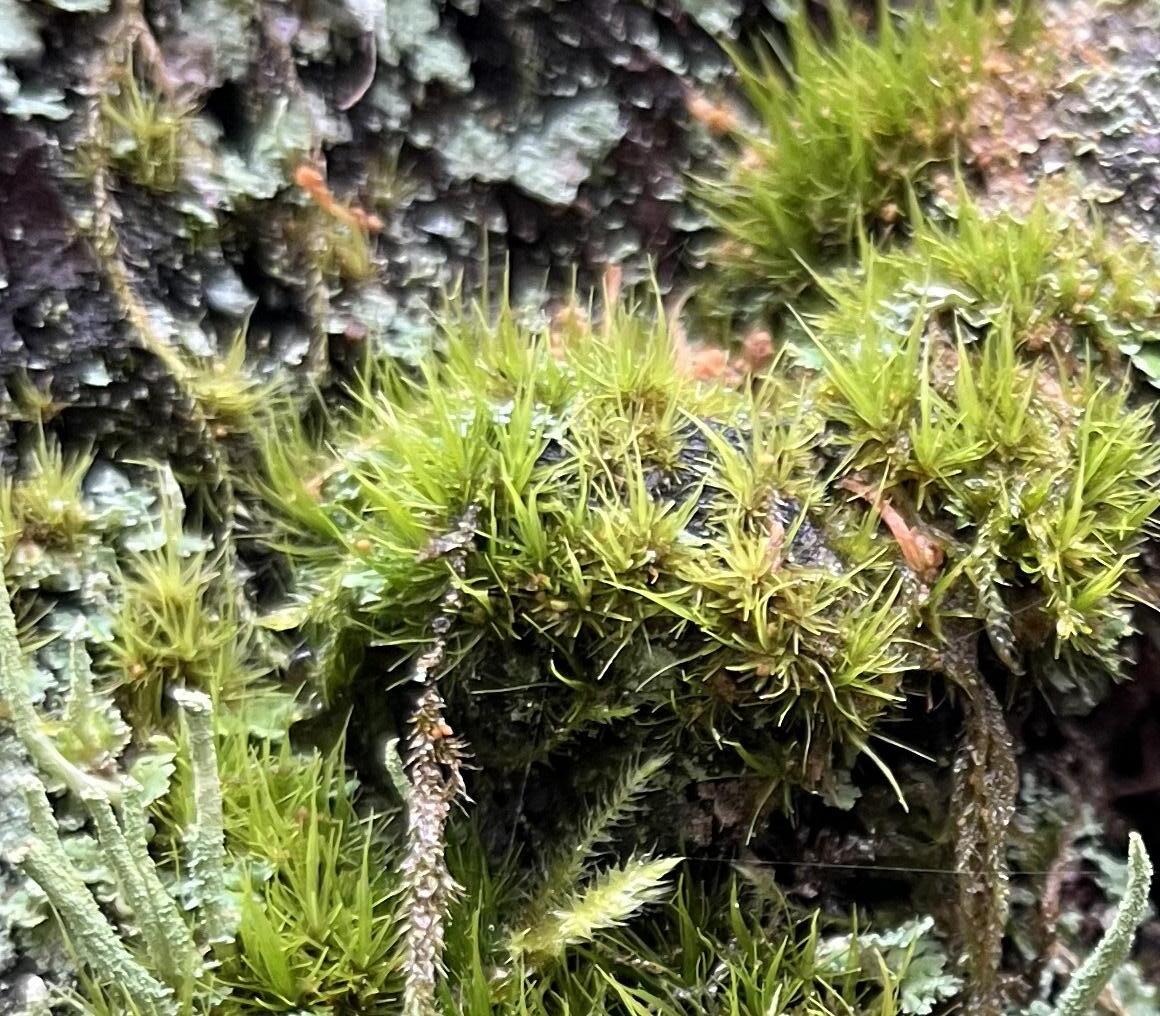
ABSTRACT
Moss has been used for a variation of green walls, in its living and preserved state. This is important because there is a lack of study about how moss and lichen can be used in combination with other living species on an interior green wall and the benefits of using it for an architectural and design feature in buildings. In this study,
multiple samples will be tested for their performance as an acoustic barrier, and for how preserved moss and lichen react to sunlight. Once the samples have been tested as an acoustic barrier in their living state they will be preserved and exposed to sunlight for one week. At multiple stages throughout the experiment, the moss and lichen
will be tested alongside a strip of FloraFelt for its acoustic qualities. Lastly, a prototype will be built to represent how preserved moss, lichen and living plants can be used in combination with each other to create an interior green wall. The outcome of this experiment is to understand moss and lichens performance and their beneficial use
in living systems. This is a benefit to the design field because it will allow designers to better implement functional green walls into their designs.
1- Photo: Porella
2- Photo: Leocobryum
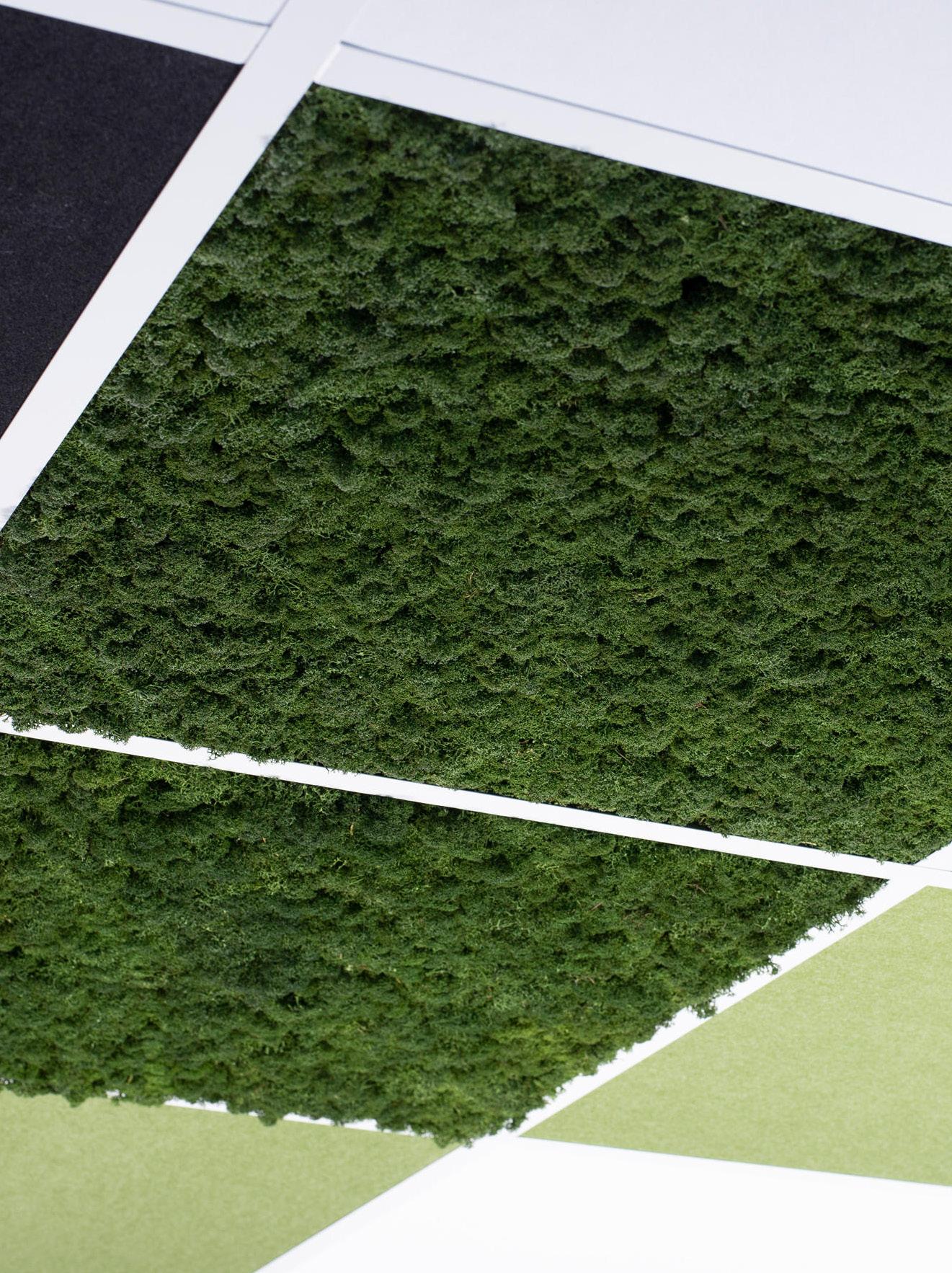
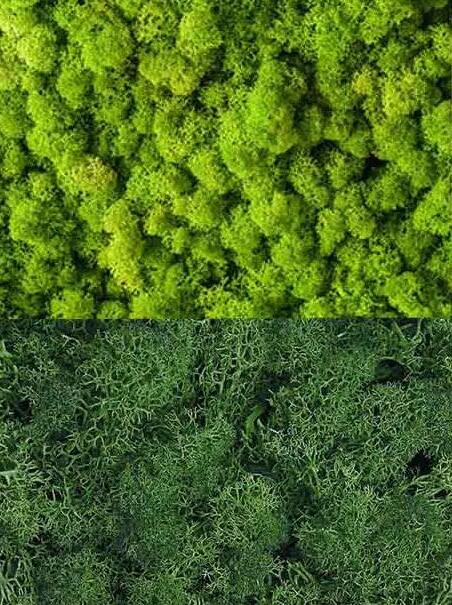
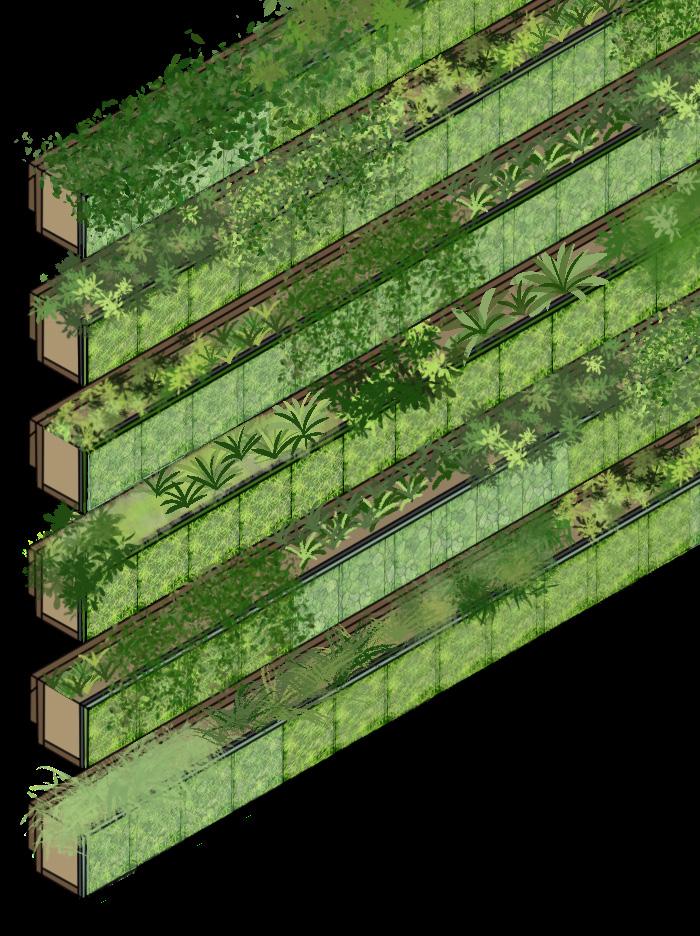
RESEARCH AIMS
This experiment aims to explore the acoustic benefits of preserved moss and lichen as well as the light tolerance for application in an indoor green wall. This will be done through testing the acoustical absorption of moss and lichen, and observing the effect of sunlight on its appearance.
1- Photo: (preservedmoss)
2-Photo: (“Tile Moss.”)
3-Photo: Living System Design
Determine Moss Viability In High Sunlight Areas
Establish Moss as an Acoustic Barrier
Create System that Combines Moss and Living Plants
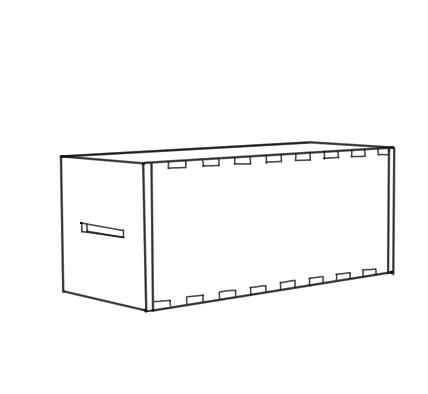
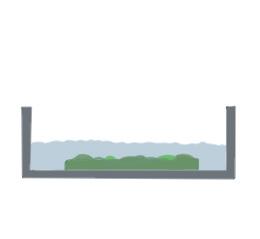
FABRICATION PROCESS
The moss and lichen samples will be tested for the acoustic absorption using the box shown above throughout the experiment. The samples will be preserved in a mixture of vegetable glycerin and hot water. The samples will then be exposed to natural and LED light to test their longevity for green wall application.
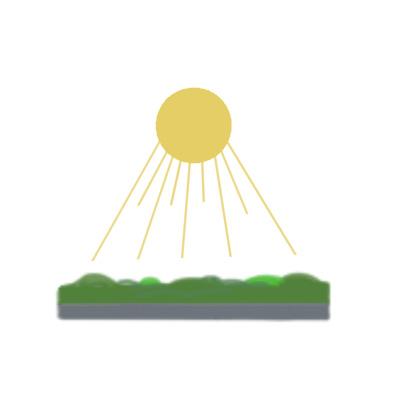
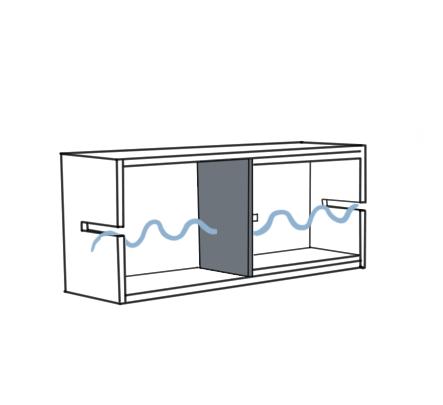
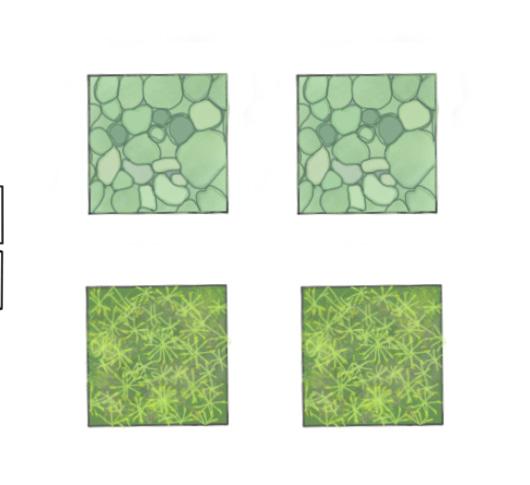
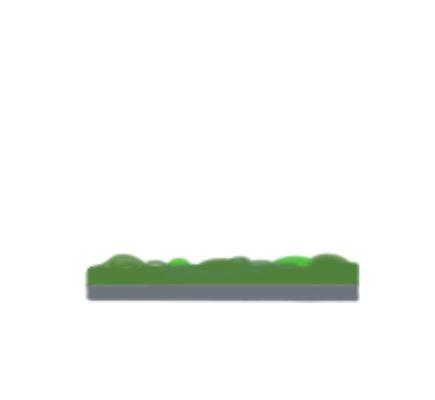
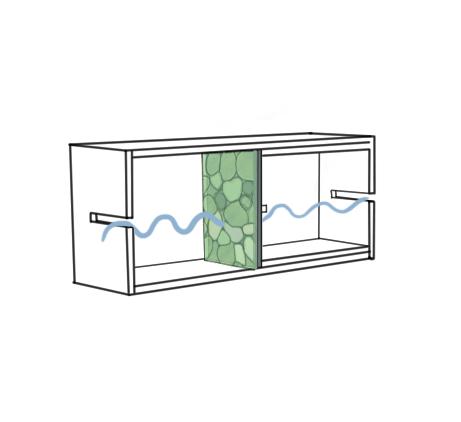

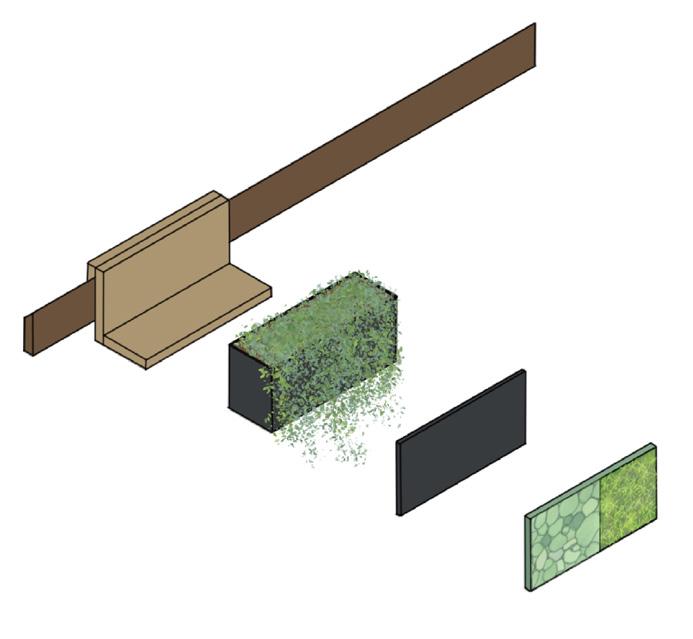
1. BUILD BOX
2. TEST FELT BASELINE
3. TRIM SAMPLES
4. PRESERVE SAMPLES
5. ATTACH SAMPLES TO FELT
6. TEST PRESERVED SAMPLES
7. EXPOSE SAMPLES TO LIGHT
TEST EXPOSED SAMPLES
INVESTIGATION
Finalize Research
Prepare Acoustic
Collect Samples
TESTING
Dry Samples
Test Acoustic Baseline
Preserve Samples
Test Preserved
Sunlight Exposure
Test Exposed Moss
FABRICATION
Design Proposal
Prototype Fabrication
Graphic Presentation
Final Exhibition
DETAILED TIMELINE
GANTT CHART
This chart displays the timeline I will follow in my research and fabrication process. Each of these steps correlates to the diagrams shown in the fabrication process to the left.
INVESTIGATION
The moss and lichen samples will be tested for the acoustic absorption using a plywood box. Pink noise will be played for 15 seconds for this test because it reflects how humans perceive sound.
TESTING
The samples will be tested for their acoustic absorption at three different times. When they are dried, preserved, and after they have been exposed to sunlight. The visual appearance of the samples will be recorded throughout the process as a secondary test of longevity.
FABRICATION
This prototype will use found materials to assemble an example of the green wall system shown in step 9. This prototype is meant to be assembled as part of a larger system which is shown later in this booklet.
MATERIALS
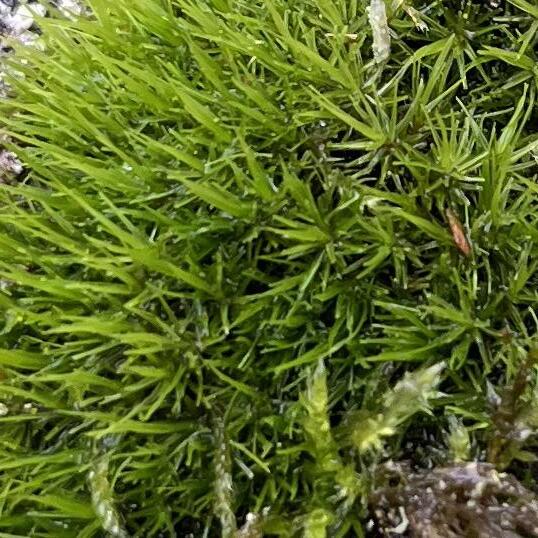
Phylum: Bryophya Cladophora Columbiana
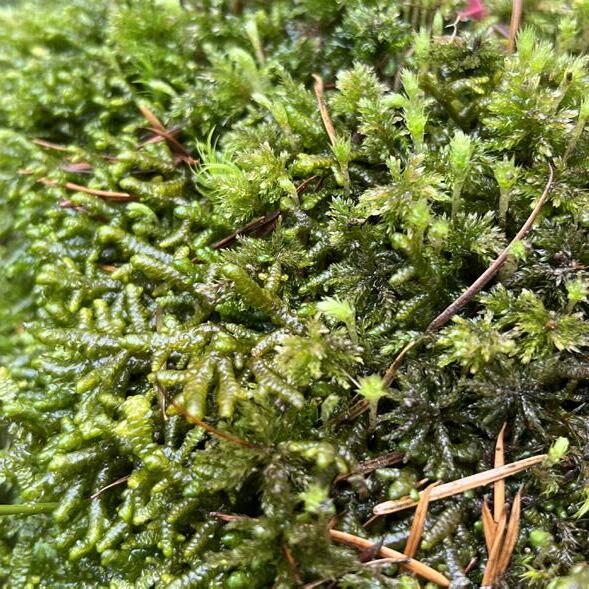
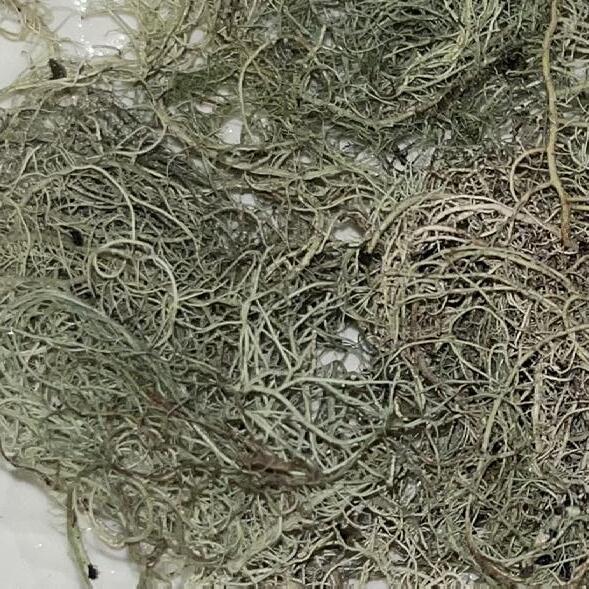
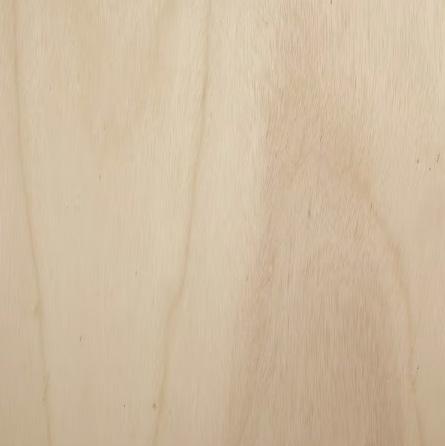
These are the materials I will need in order to complete the fabrication process. In order to complete the full experiment the following materials will also be needed:
• Hot Water
• Mixing tub
• LED grow lights
• Wood glue
• Two iPhones

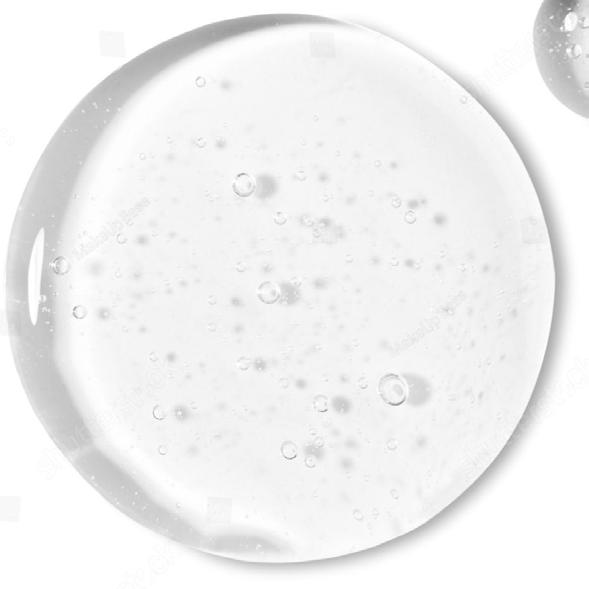
Genus: Porella
Vegetable Glycerin
FloraFelt Pads
Plywood
Genus: Usnea Beard Lichen
INITIAL DESIGN
Taking inspiration from the FloraFelt Pro System this green wall utilizes a 4’ x8’ module which can be used on its own or with other modules. Within the module it can be highly customized in squares or rectangles as small as 6” x6”. The aim of this design is to combine the acoustic and visual benefits of preserved moss and felt with the health
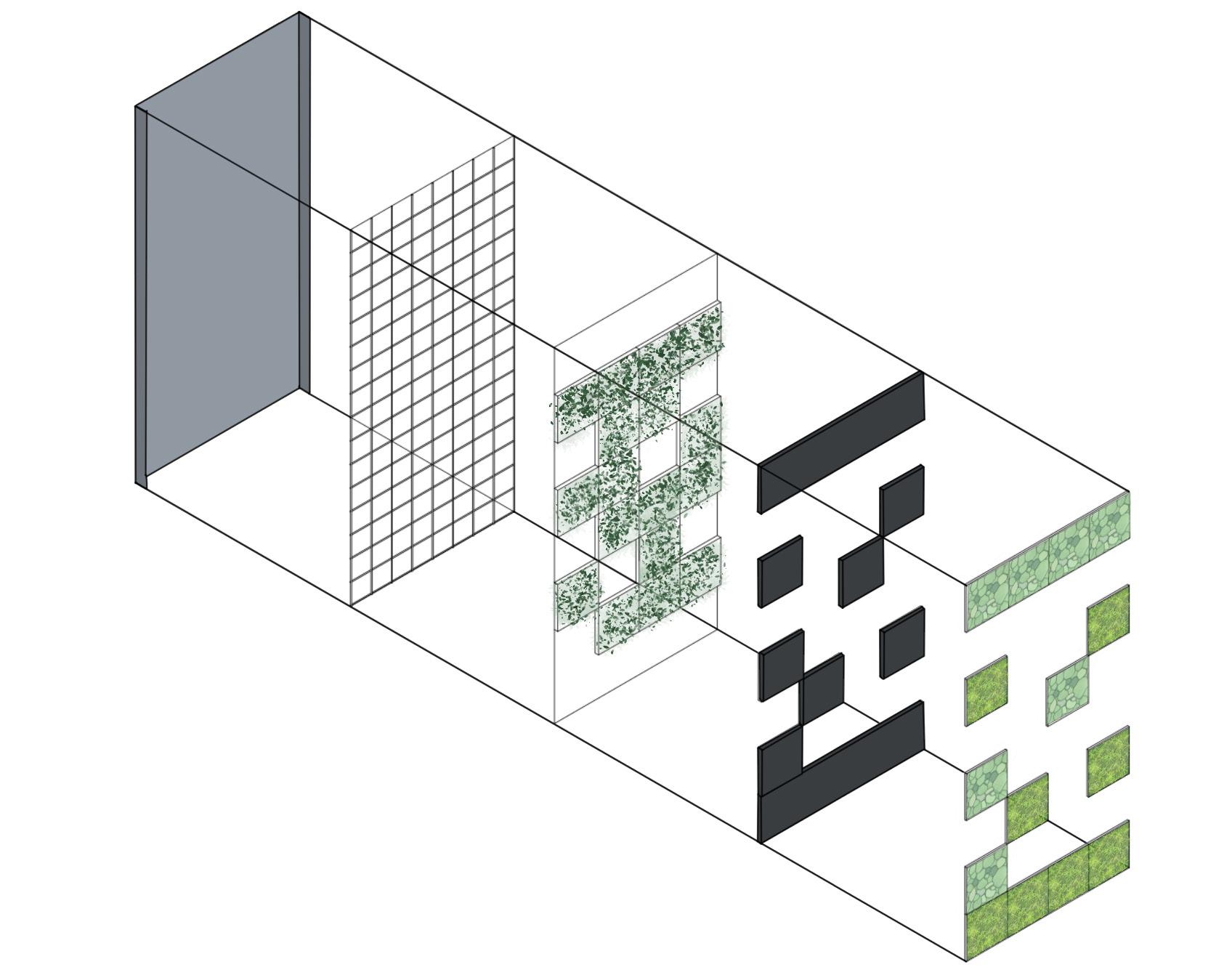
benefits of living plants. These modules can be organized and customized to the users desires and utilizes a specialized drip irrigation system that targets only the living plants.
Water Barrier
Metal Grid
Live Plants
Felt
Preserved Moss
PROTOTYPE
This design for an indoor living wall will combine preserved moss or lichen and living plants. This is a modularized system that uses a french cleat hook which can be attached to the wall in a simple yet elegant manner. The living wall could implement a specialized drip irrigation system, or the modules could be individually
watered. The scale of this design can be customized to any area, and easily installed and adjusted. The shelving unit could also be used to incorporate other elements apart from plants to create an aesthetic wall design.
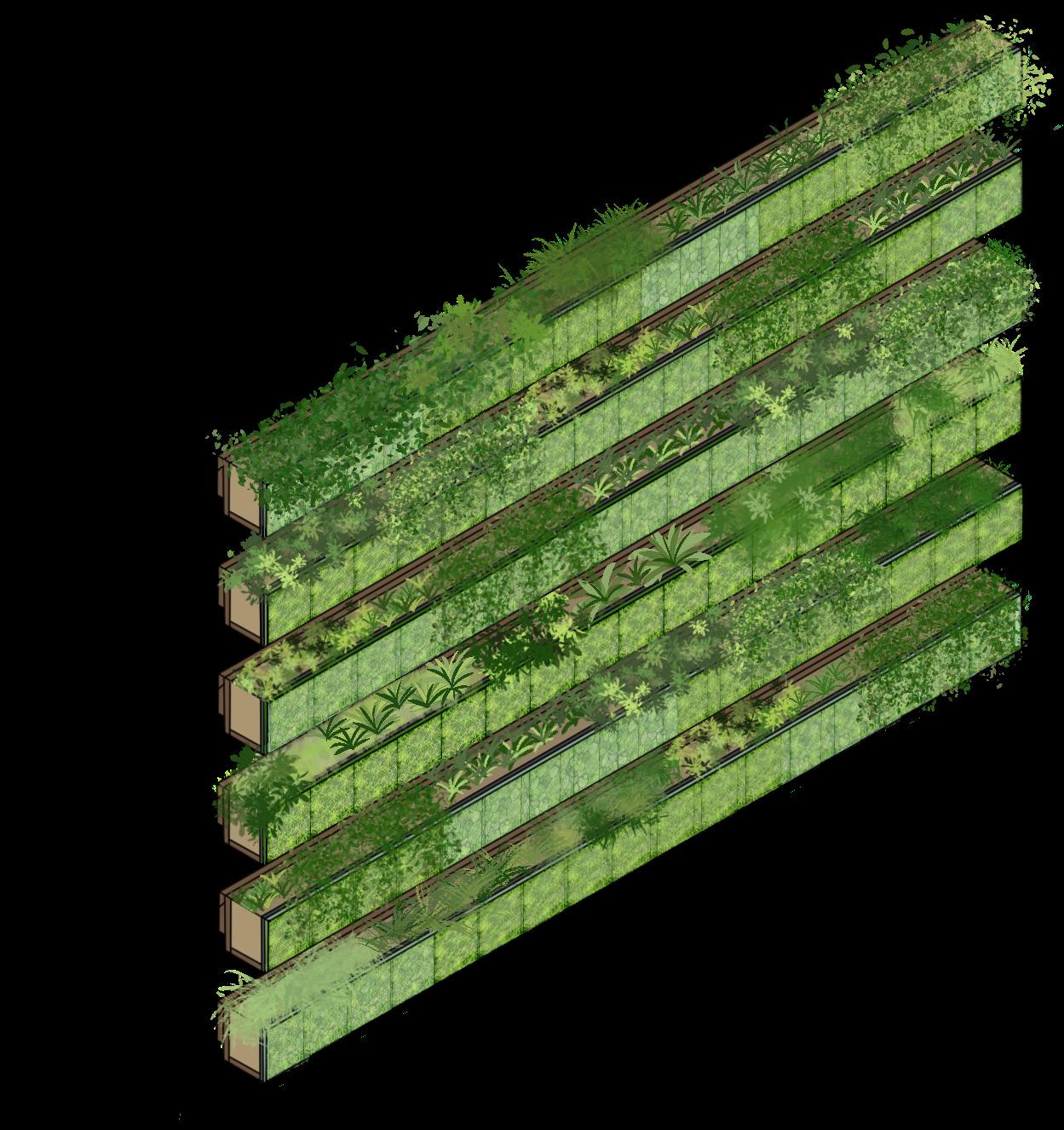
PROTOTYPE
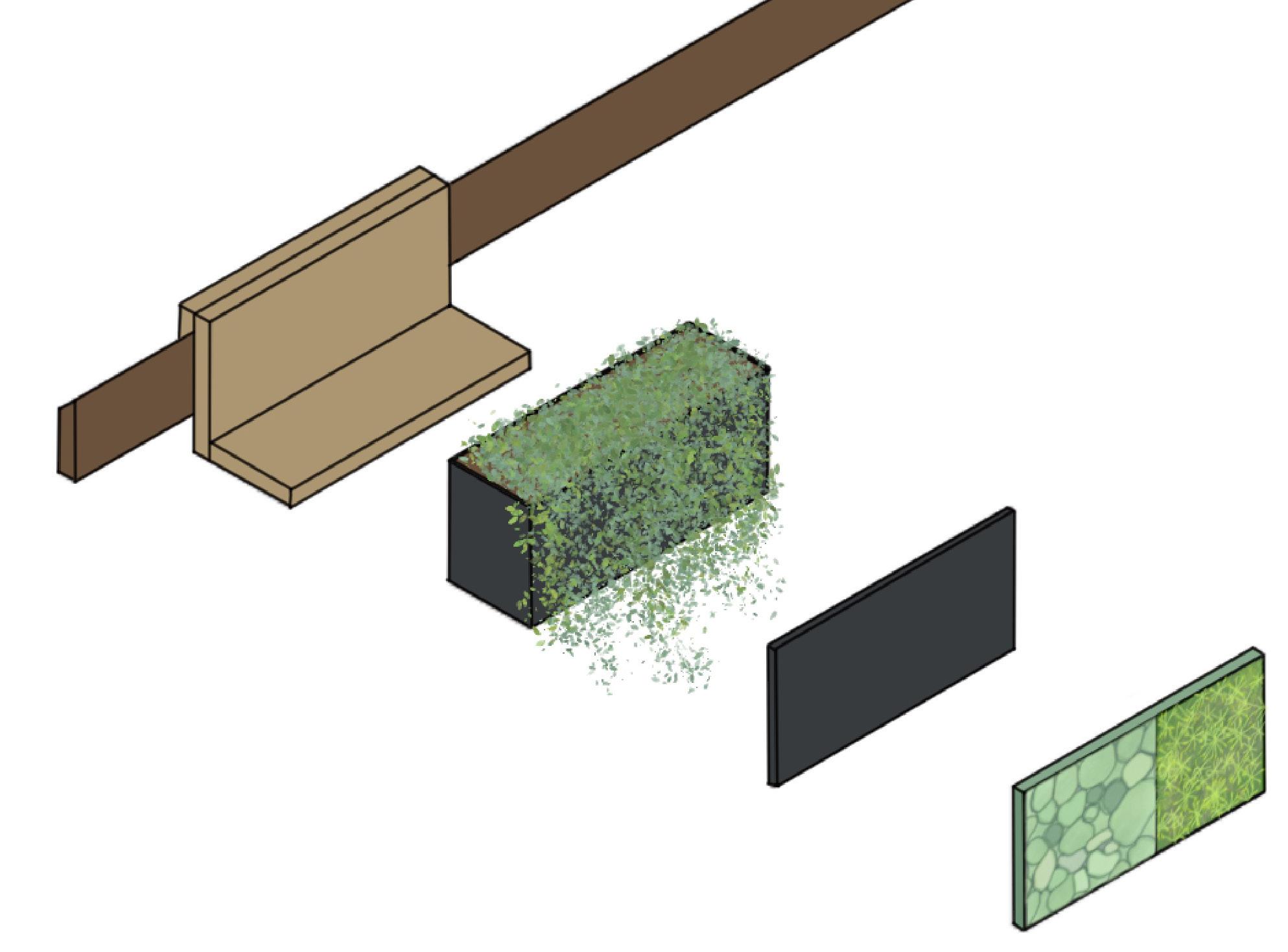
This diagram shows a breakdown of the individual modules used for the full green wall prototype. Number one shows the wood panel that would be attached directly to the wall, which can be totally covered with shelving or left partly exposed. Number two is the shelf attachment that can be hooked on to number one by use of a french cleat hook.
This shelf can then be used for the planter shown in number three or other decorative items. Number three is a planter for live plants which has a moisture barrier on the interior of the pot. Number four and five show the felt padding and moss panels which can be customized using many different varieties of moss or lichen. The panels are
attached directly to the planter pot to add aesthetic value to the overall green wall as well as providing acoustic absorption. The standard module of these planters would be L: 12” x W: 6” x H: 6”. The french cleat design allows for various module sizes to be built based on personal preference and needs.
5-
1- 3/4” Stained Plywood Hook
2-3/4” Plywood Shelf
3- Planter Box with Live Plants
4- Felt
Preserved Moss
University Of Oregon
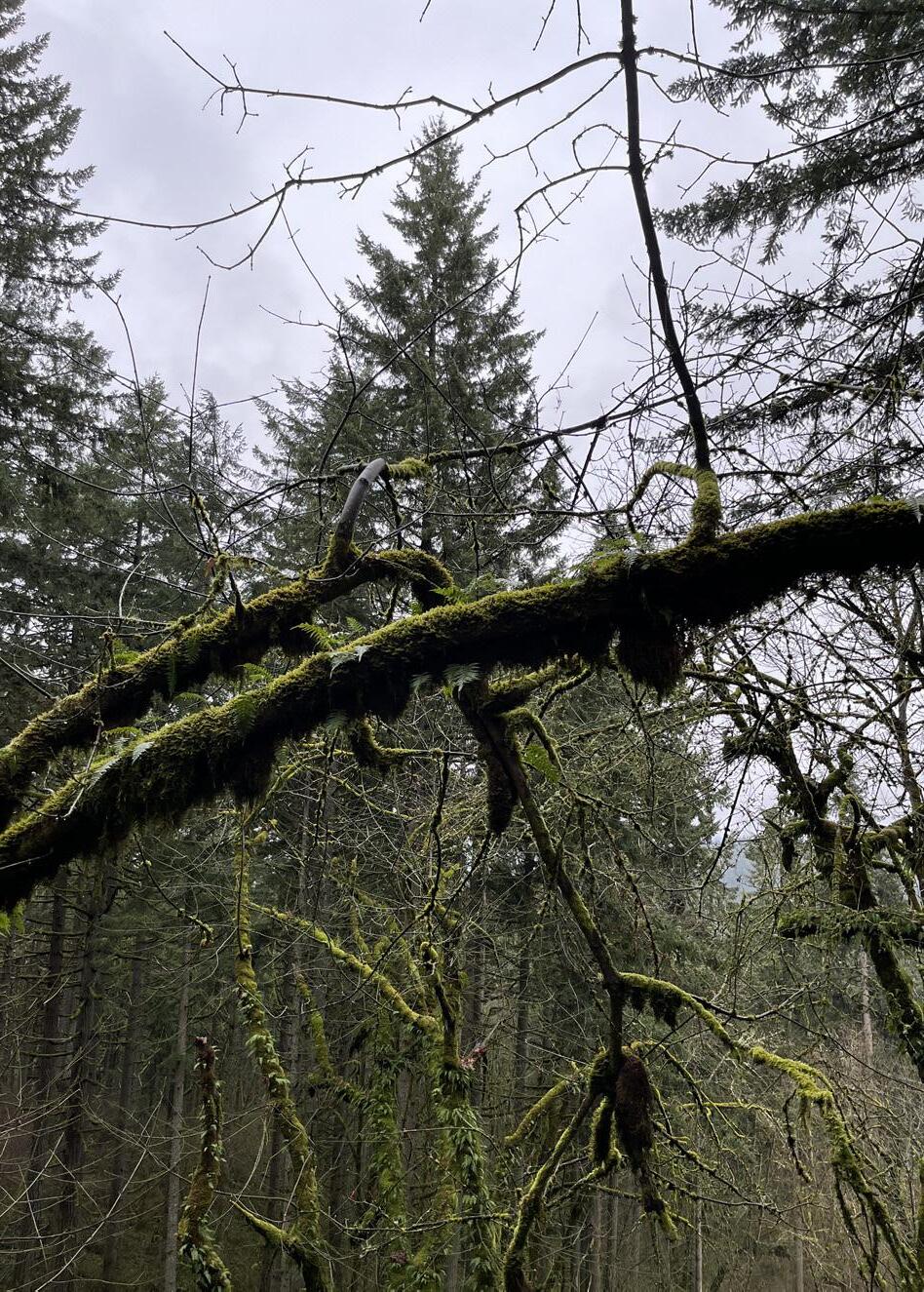
SAMPLE COLLECTION
For this experiment I collected my own samples of moss and lichen to test from fallen trees after an intense wind and ice storm. I used ethical collection methods by collecting no more than 5% of any species in a specific area, and collecting from downed trees.
FOX HOLLOW, EUGENE, OREGON
Fox Hollow Trailhead
PHYLUM: Bryophyta
GENUS: Porella
COMMON NAME: Tree Ruffle Liverwort
PHYLUM: Bryophyta
GENUS: Leocobryum
COMMON NAME: Pincushion Moss
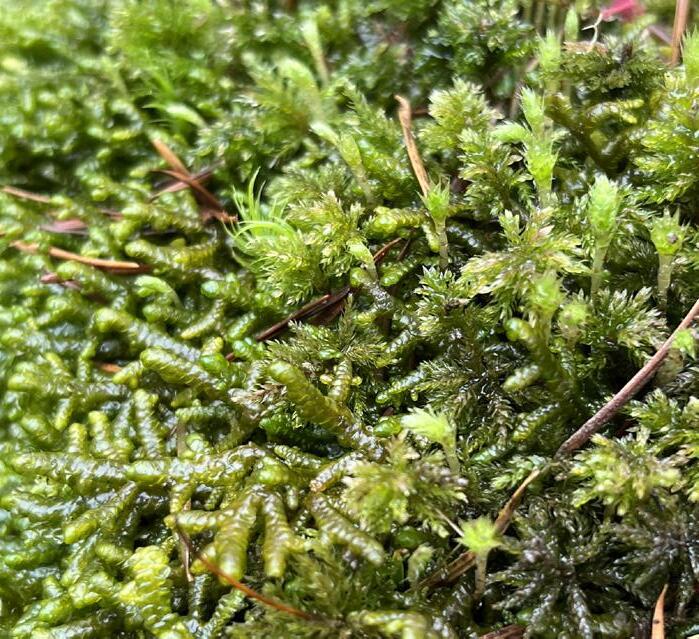
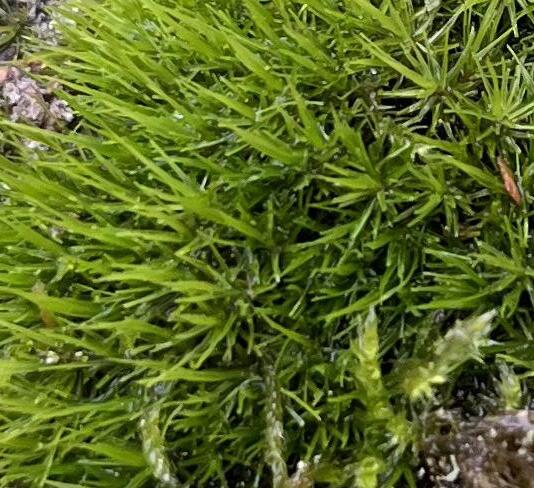
SAMPLE COLLECTION
SPECIES IDENTIFICATION
Moss is known to be one of the most difficult species of plant to identify, because there are so many varieties. After speaking with horticulturalists from Oregon State University I found the best way to identify my moss was by using iNaturalist. This website and app allows users to rely on AI technology as well as other plant enthusiasts
for species identification. Here I will display my most accurate assumptions on which species of moss I collected based on my own research and the help of iNaturalist. In both of the moss samples there was a slight variation in the species because different types of moss can grow so closely together. I will identify the most prevalent species
in each sample. The identification of these samples was an important step in my research because moss and lichen have such great variety, Although, it is important to note my research is aimed to be generalized for all moss and lichen species.
PHYLUM: Ascomycota
GENUS: Usnea
COMMON NAME: Beard Lichen
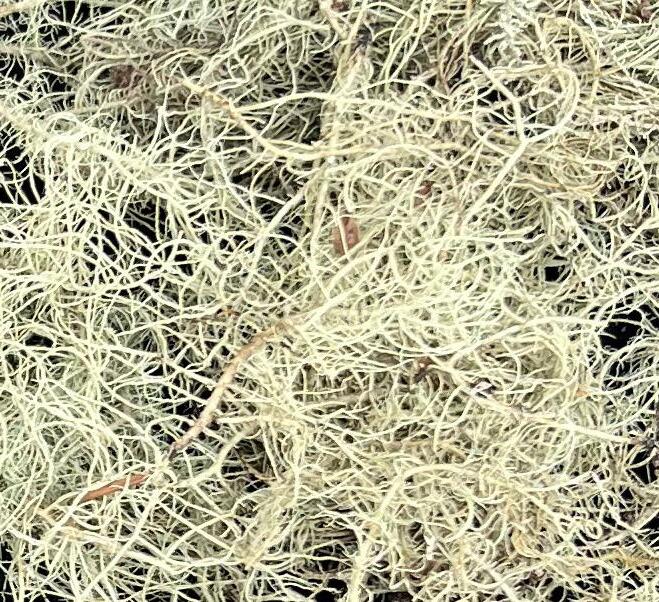
DATA COLLECTION
ACOUSTIC ABSORPTION
The acoustic data I collected for this experiment was inconclusive. It does not prove that the samples are good acoustic barriers in any state. Though the data does show that the presence of an object (felt) helps in lowering sound levels. I believe the inconclusive results were due to testing error and lack of variation in samples.
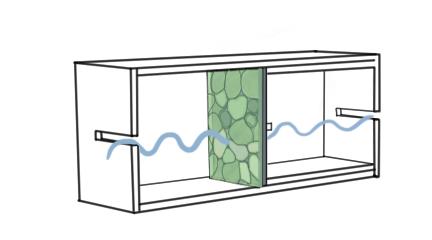
Genus: Usnea
Genus: Porella
Genus: Leocobruym
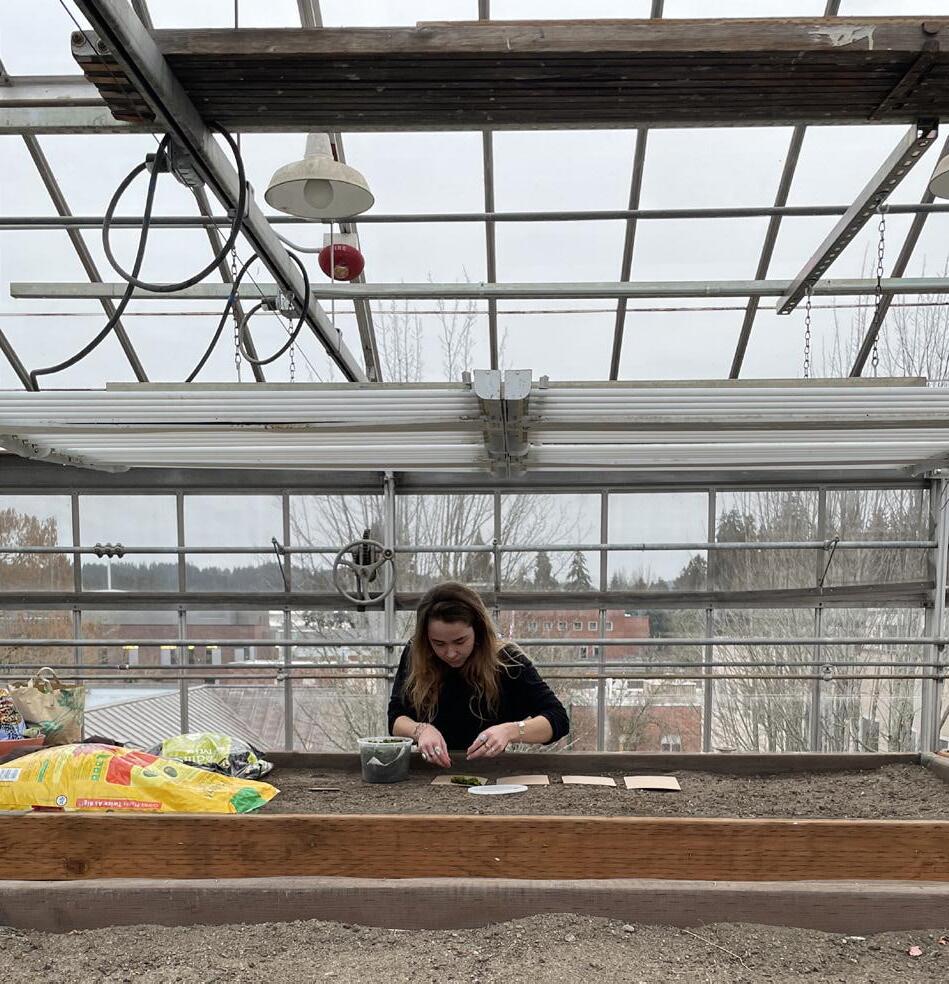
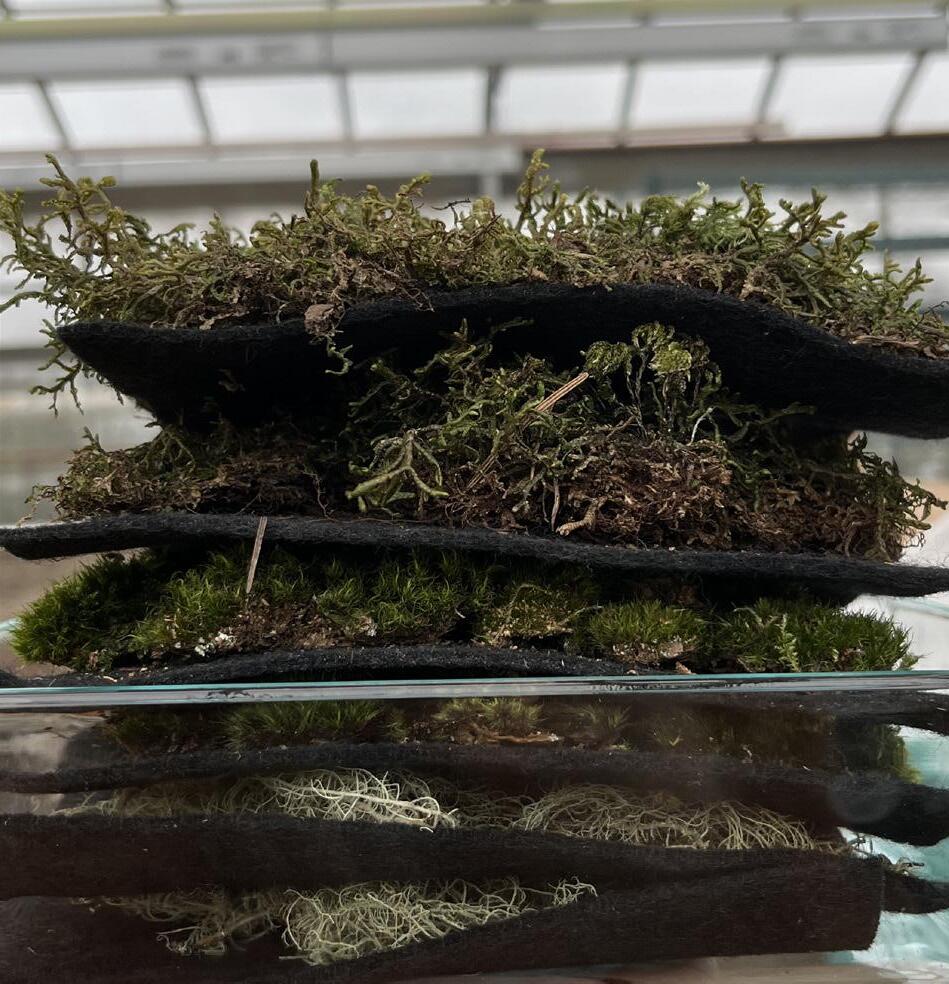
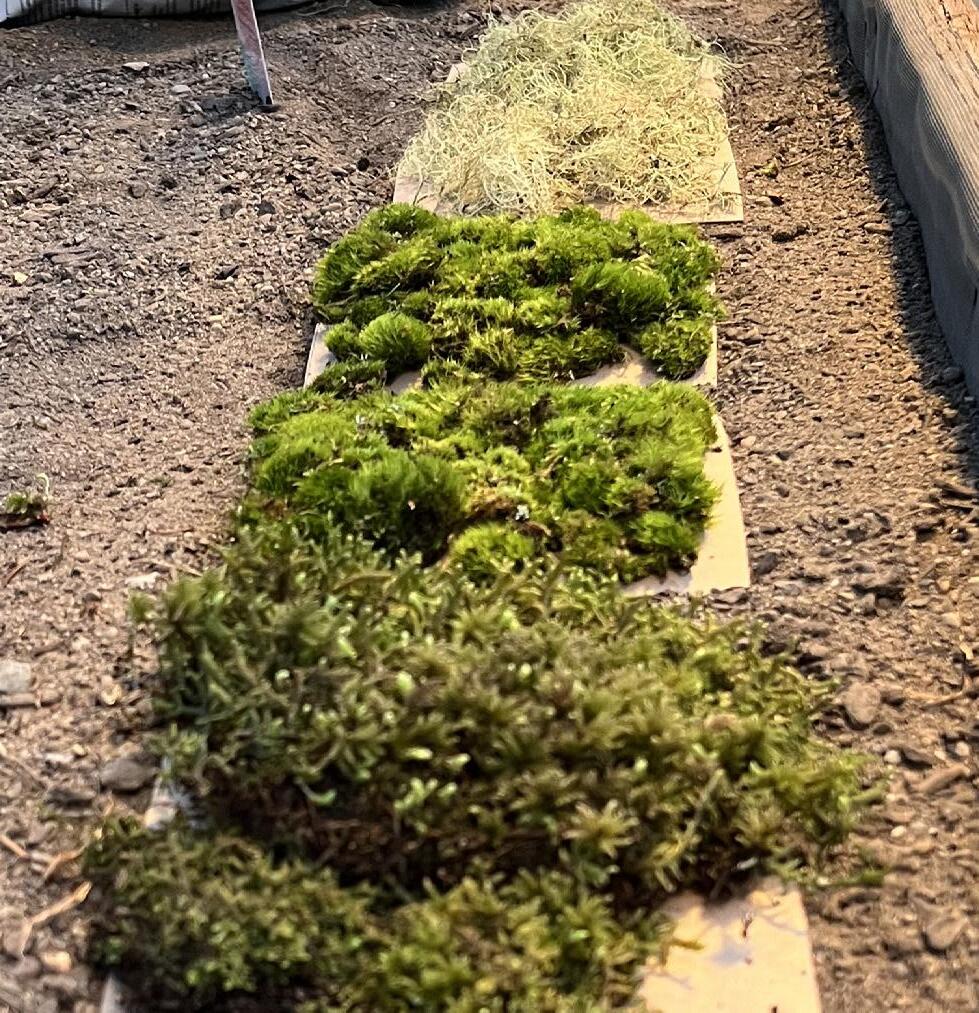
DATA COLLECTION
EXPOSURE
The photos shown to the right show how the moss changed in appearance throughout this procedure. In this test, the samples were exposed to a combination of natural and artificial light. With the limited time to complete this process the samples were exposed to either natural or artificial light 24 hours a day. The artificial lights were
turned on during the night to see if the quick reaction to light exposure in the samples. The grow lights were 54W, 4100K, and produced 4,480 lumens. In the first two days after preservation there was a significant change in the samples. The color of all of the samples changed from lush green to bleached yellow. The lichen samples had the least amount
of change because their color was initially the lightest. After the first two days of light exposure there was no more significant change in color or texture over the next five days. I predict that if the samples were exposed to sunlight for longer there would be a slow change in the color, and the sun would continue to bleach the samples, though the
texture would stay consistent due to the glycerin preservation.
1- Sorting samples
2- Transporting samples for testing
3- Exposing samples in greenhouse
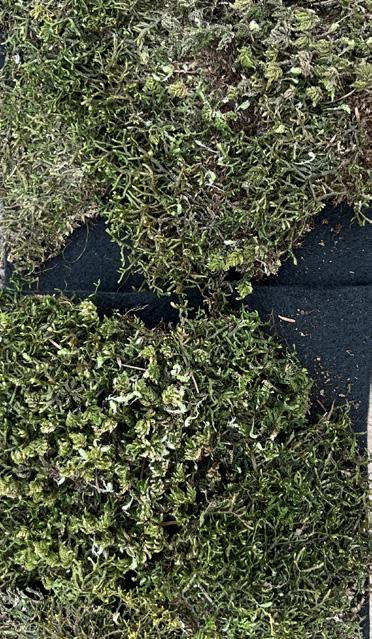
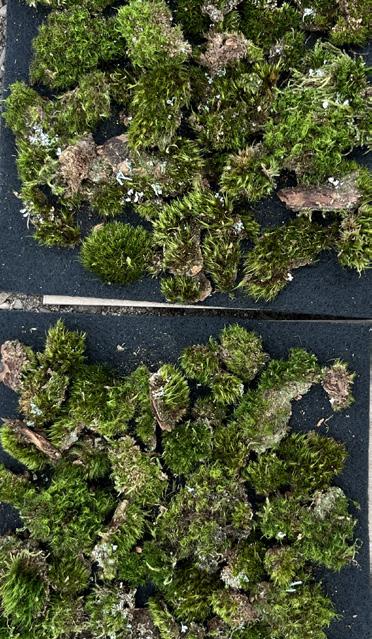
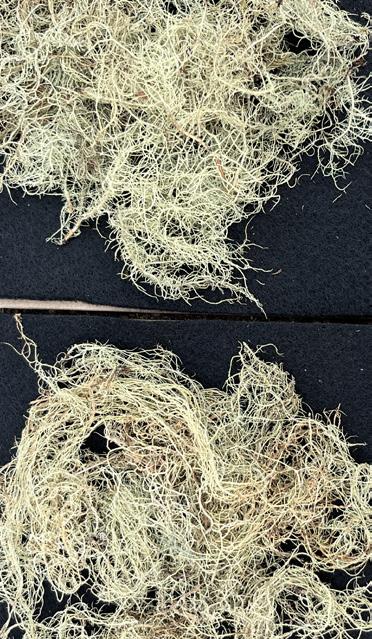
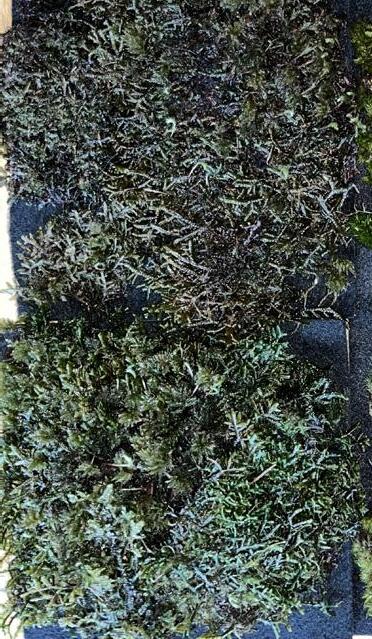
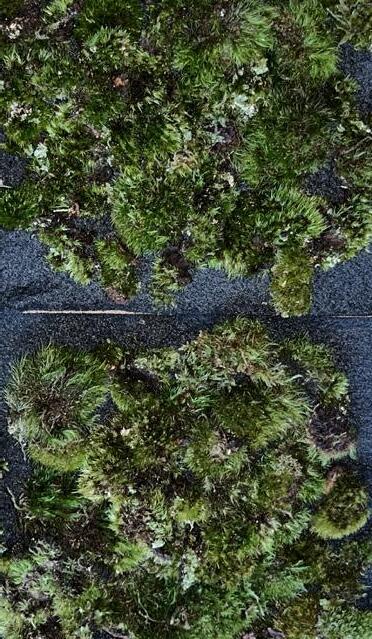
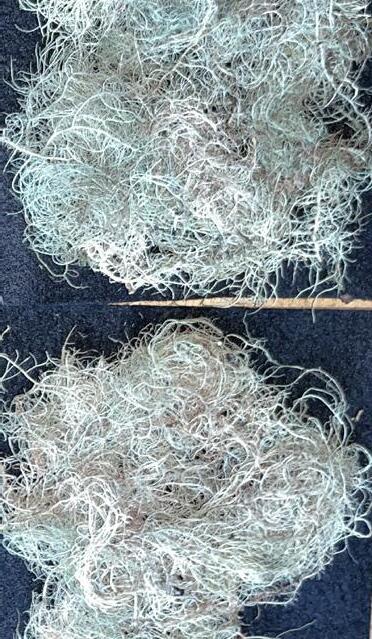
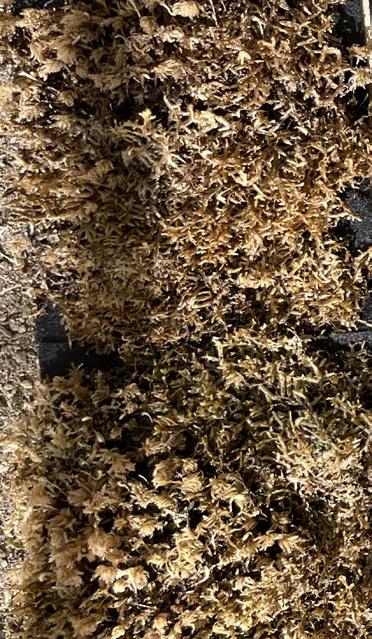
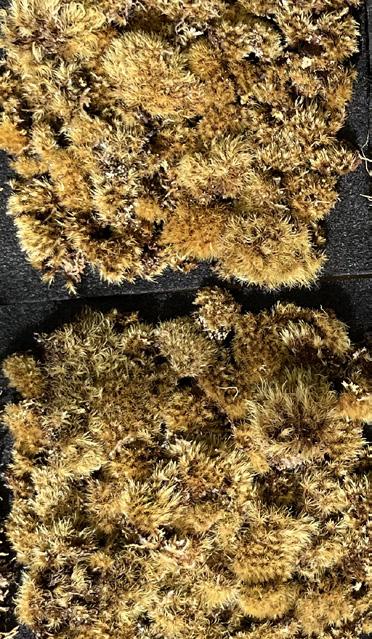
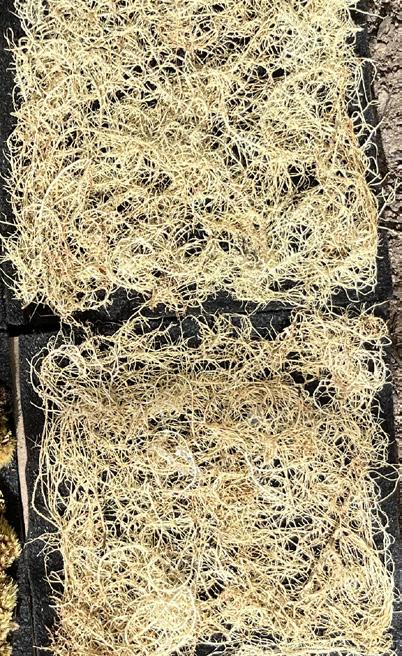
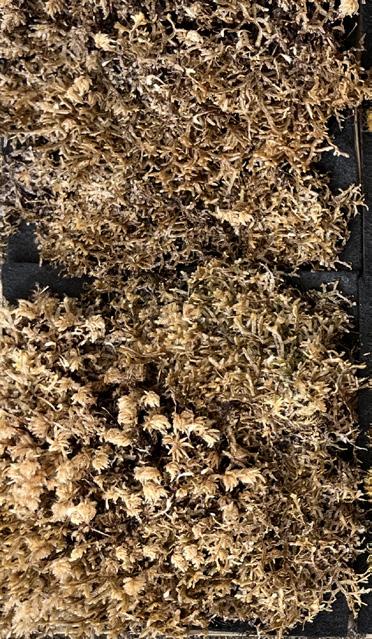
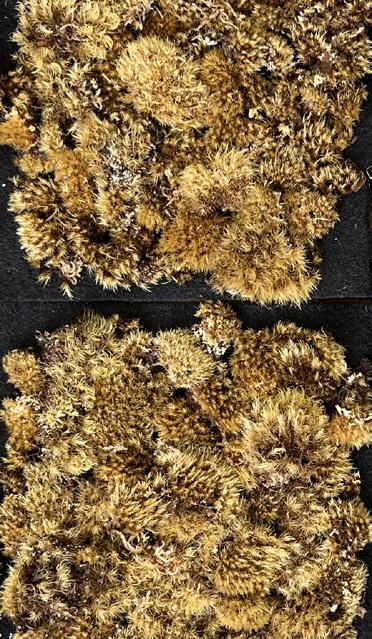
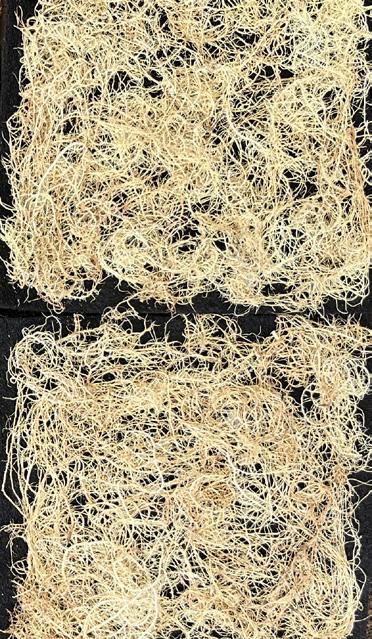
PORELLA
LEOCOBRYUM
USNEA
PORELLA
LEOCOBRYUM
USNEA
PORELLA
LEOCOBRYUM
USNEA
PORELLA
LEOCOBRYUM
USNEA
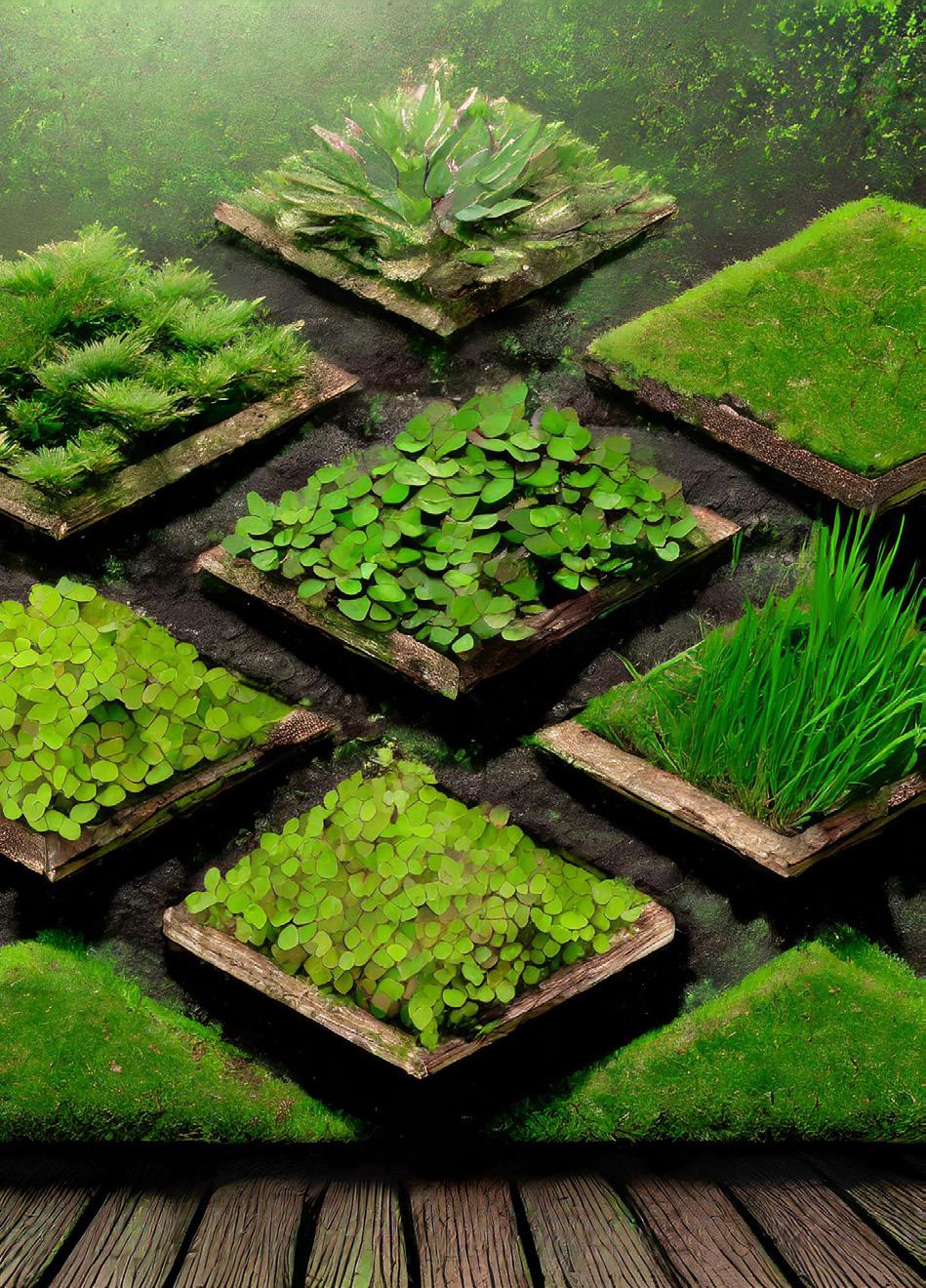
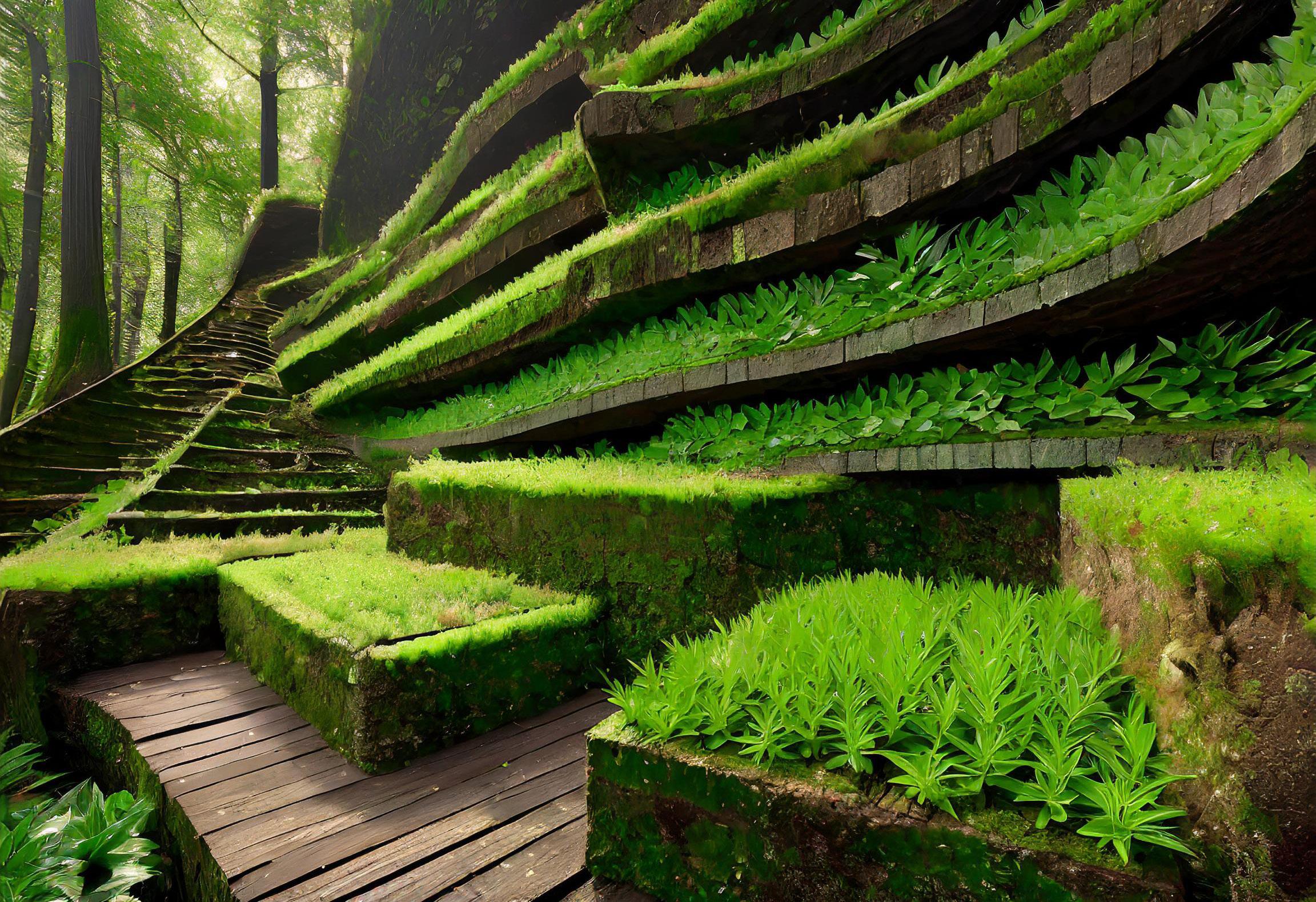
In this project I learned that preserved moss and lichen cannot be used for green walls that are exposed to light is because of their almost immediate change in color. The yellow color is not aesthetically pleasing and would not look good with other living plants. To further investigate this, samples could
be tested under sunlight and LED lights separately to see which or both of the light sources effects the color. This change in color is why designers often choose to dye moss in the preservation process, this allows for further customization and pleasing aesthetic value to the preserved plants.
The acoustic test could be redone with a more accurate testing method to see more clear results on the affects of preserving moss on the acoustic properties. The research of the combination of moss and living plants for use on a green wall could be pushed much further. The images shown
above are additional ideas of how moss and living plants can function together in an architectural way.
CITATIONS
“36×54 Cushion moss artwork.” Wabi Moss, Accessed 30 Jan. 2024.
<www.wabimoss.com/product/moss-wall-art-54x36-copy/>
Adobe Firefly, Artificial Intelligence, text to image, curated by Eva Willis.
< https://firefly.adobe.com/inspire/images>
“aeroSQAIR.” circle17, AustrianStartUps, respACT, Accessed 28 Jan. 2024.
<circle17.at/portfolio/aerosqair/>
“Blue Moss Art.” Etsy, MossandConfused, Accessed 29 Feb. 2024. Moss Art.
<www.etsy.com/listing/1314973280/blue-moss-art-moss-art-preserved-moss?epik=dj0yJnU9TXFXNHpPYXVjdTZReWR 1WEFBdFVZaDhKQXByS3FfM2EmcD0wJm49M3pzcEREQmtXdDAycGxTWmRWZDRfQSZ0PUFBQUFBR1hneUNj.>
Dan. “Tortula ruralis – A Shining Star Moss (Care Guide).” Tribe, 19 Dec. 2023, <terrariumtribe.com/terrarium-plants/tortula-ruralis-star-moss/>
“Florafelt Pro System Unit.” Accessed 29 Jan. 2024.
<Florafelt Living Wall Systems, florafelt.com/products/florafelt-pro-system-stainless-steel-grid-modular-vertical-garden-sys tem.>
“Mood Moss – Dicranum Scoparium.” Gardenista, Moss and Stone Gardens, Accessed 10 Feb. 2024. <www.gardenista.com/products/mood-moss-dicranum-scoparium/.> preservedplants. “Is preserved moss dried moss?” Preserved Plants USA, Accessed 1 Feb. 2024. <preservedplantsusa.com/preserved-moss-vs-dried-moss/>
“Preserved Sheet Moss.” Anthropologie, URBN.com, Accessed 10 Feb. 2024.
<www.anthropologie.com/anthroliving/shop/preserved-sheet-moss?color=000&type=STANDARD&size=One%20Size&quanti ty=1. >
“Small Preserved Living Wall 14” x 14”.” The Sill, The Sill, Inc. , 2024, <www.thesill.com/products/preserved-plant-living-wall.>
Stott, Rory. “This Modular Green Wall System Generates Electricity From Moss” 24 Feb 2016. ArchDaily. Accessed 1 Feb 2024.
<https://www.archdaily.com/782664/this-modular-green-wall-system-generates-electricity-from-moss> ISSN 0719-8884
“Tile Moss.” Architonic, Accessed 1 Feb. 2024.
